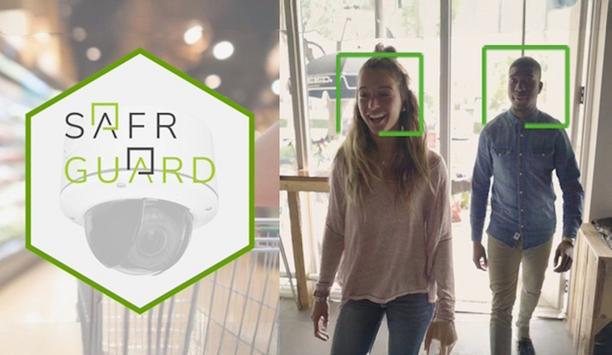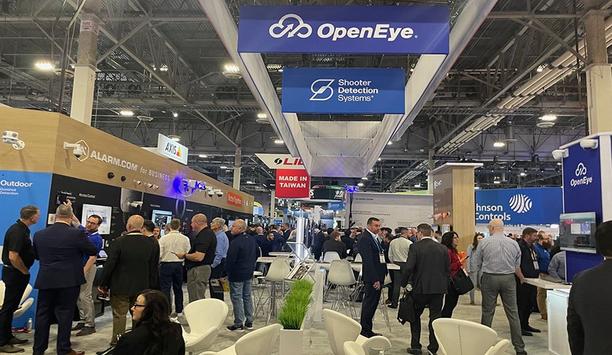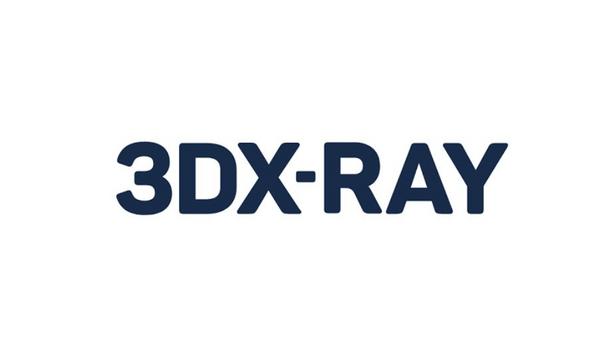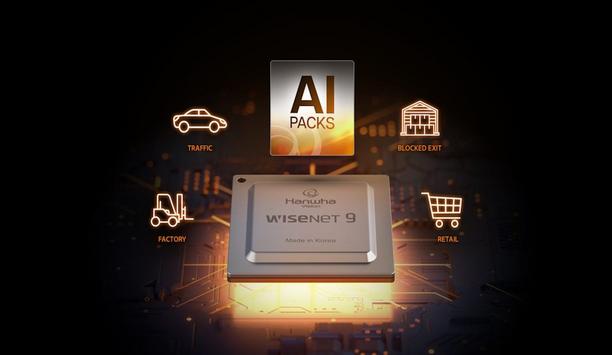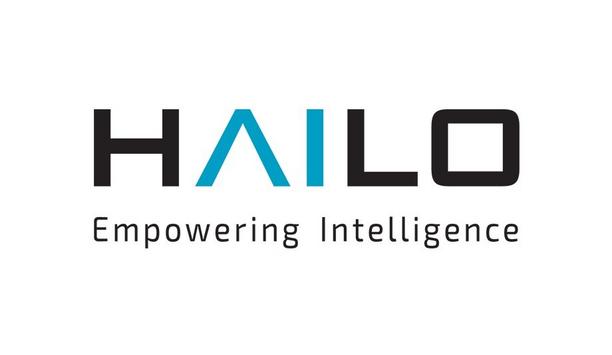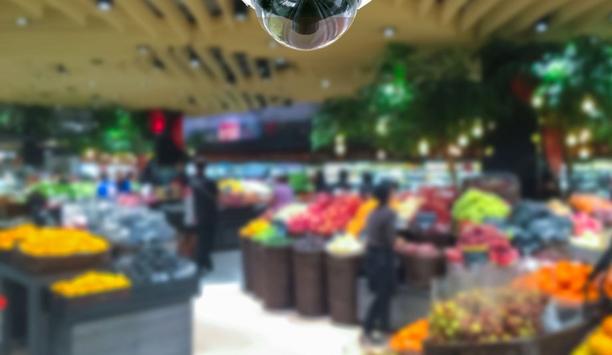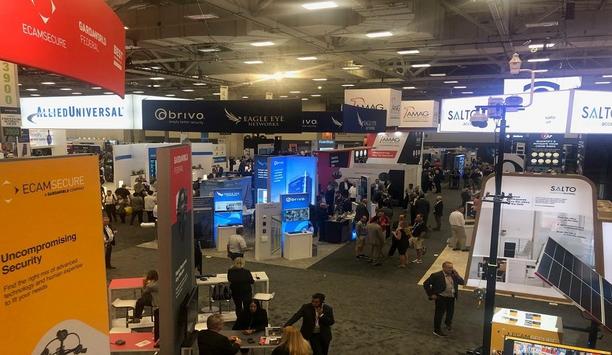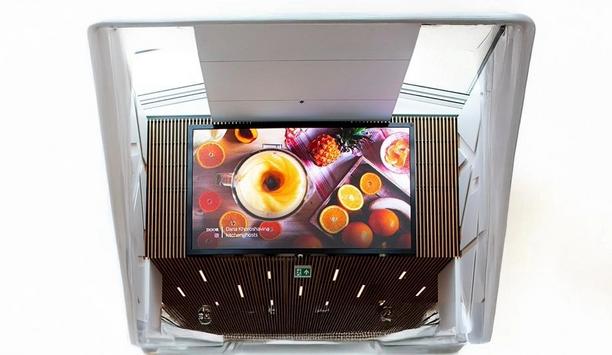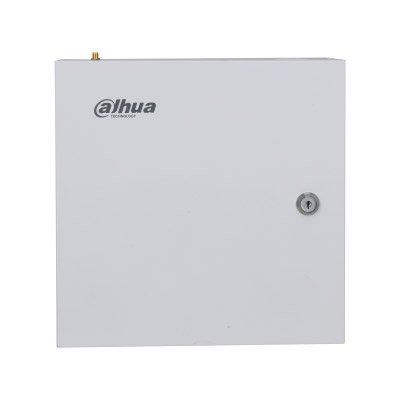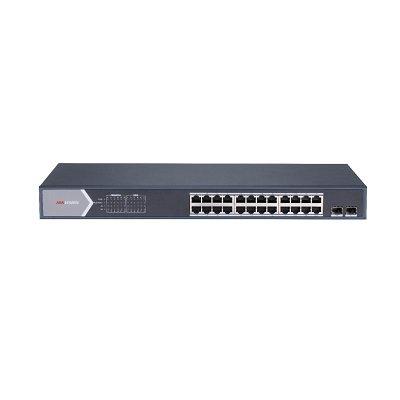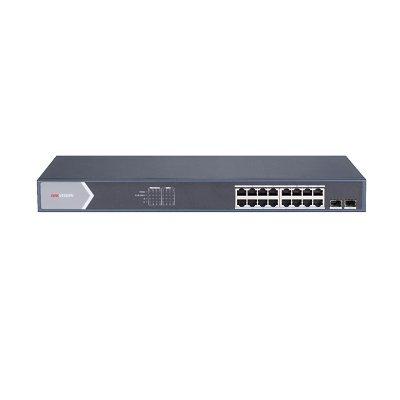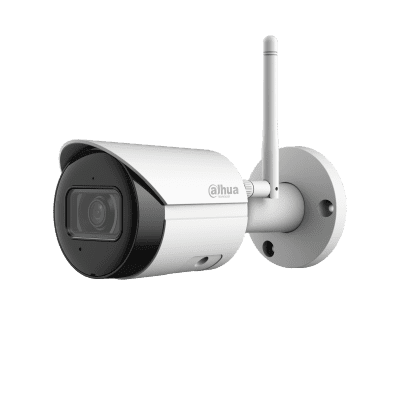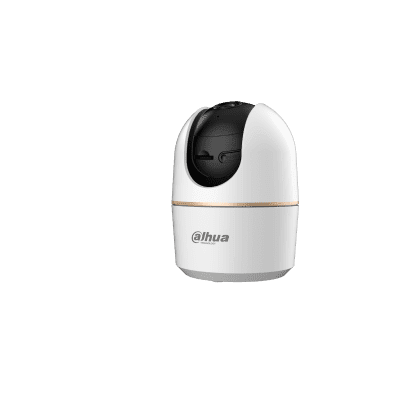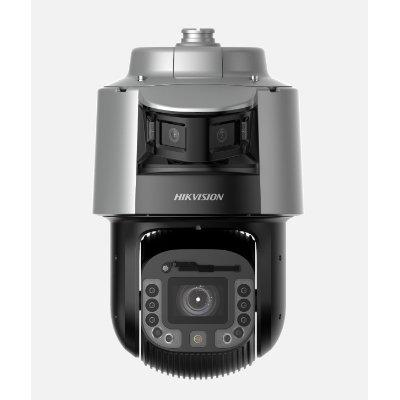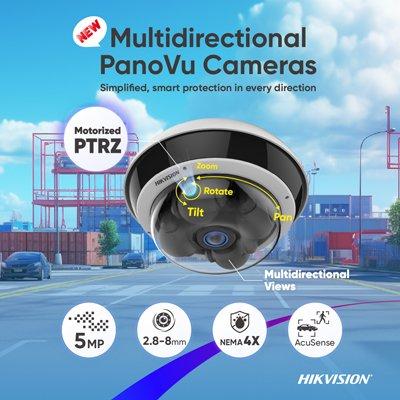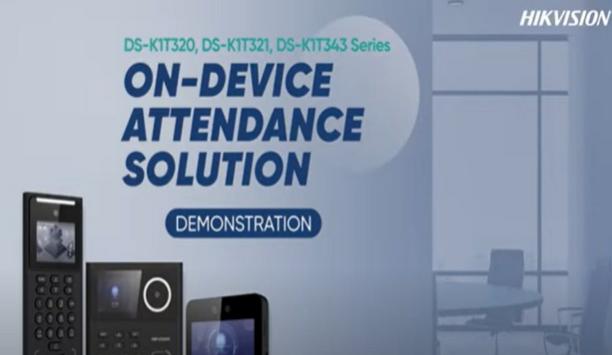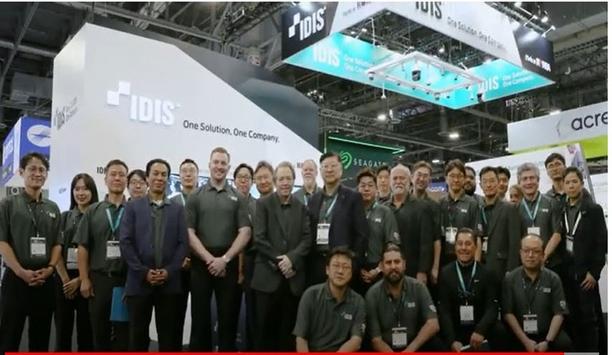Shop security systems
Genetec Inc., the pioneer in enterprise physical security software, announced the AutoVu™ ANPR Analysis Reports plugin, an advanced investigation tool that expands ANPR-based forensic search capabilities within Genetec™ Security Centre. The new plugin empowers law enforcement officers and investigators to quickly narrow down a pool of suspects using vehicle behaviour patterns—specifically driving speed and travel cohorts. By eliminating manual data sorting and enabling ta...
ASSA ABLOY has signed an agreement to acquire Door System, a Danish manufacturer of high-quality fire rated doors with particular expertise in the pharmaceutical, food and retail industries. "I am very pleased to welcome Door System to ASSA ABLOY. This acquisition delivers on our strategy to add complementary products and solutions to our core business,” says Nico Delvaux, President and CEO of ASSA ABLOY. ASSA ABLOY acquires Door System Sales for 2024 amounted to about MDKK 125 (ap...
SAFR, a pioneer in AI-powered security solutions, announced the launch of SAFR® Guard, a powerful new product purpose-built for the Retail Loss Prevention and Asset Protection market. Designed to prevent shoplifting and retail crime before it happens, SAFR Guard makes shopping better and safer for both customers and employees. SAFR Guard delivers unmatched accuracy, speed, and simplicity while also respecting consumer privacy. SAFR’s proven AI platform SAFR Guard brin...
Anyone who has been in a proverbial cave for the last couple of years faced a language barrier at this year’s ISC West 2025 trade show. The industry’s latest wave of innovation has brought with it a new bounty of jargon and buzzwords, some of which I heard at ISC West for the first time. As a public service, we are happy to provide the following partial glossary to promote better understanding of the newer terms. (Some are new to the security industry but have been around in the IT...
3DX-Ray has sold two AXIS-CXi, cabinet-based x-ray systems to secure high-threat sites in Rome, Italy. AXIS-CXi was originally designed to bring the same colour-differentiating image technology used in airport baggage screening, to the mail room environment. AXIS-CXi quickly showed its potential in a whole variety of security scenarios, from embassy lobbies to the homes of high-net-worth individuals. AXIS-CXi differentiated scans Grey scale is used for the recognition of shapes and the f...
Robotic Assistance Devices Inc. (RAD), a subsidiary of Artificial Intelligence Technology Solutions, Inc., has secured the deployment of two ROSA-P 360 devices through a proactive engagement with a prominent municipal Business Improvement District. The units are being deployed to enhance safety and visibility across key public spaces managed by the local community improvement organisation. This strategic placement reflects RAD’s growing influence in urban safety initia...
News
DeterTech, a pioneer in intruder detection and identification, is proud to announce the immediate availability of SmartSpray® for rental or purchase. It is considered a game-changer in tackling retail crime as it enables police to forensically link masked offenders back to the scene of their crime, even weeks after they’ve left the store. Effective CCTV storage Retail crime is at its highest level on record, with over 2,000 incidents of violence and abuse per day Retail crime is at its highest level on record, with over 2,000 incidents of violence and abuse per day, reported in the British Retail Consortium’s Annual Crime Survey. A key factor is perpetrators’ feeling emboldened that they can anonymously steal, assault and abuse staff, and escape before security or police can intervene. While in-store CCTV can be effective, it is easily defeated by the most organised and violent offenders who choose to obscure their faces. SmartSpray system The SmartSpray system can be deployed standalone or integrated with the existing security system. When triggered, it releases a precise spray of SmartWater®, a forensic liquid that contains a code unique to each specific store. This glows under UV light and remains on skin and clothing for weeks, allowing police to identify suspects and pursue convictions. DeterTech’s forensic scientists DeterTech’s forensic scientists supply analysis and testimony in support of a belief DeterTech’s forensic scientists provide analysis and testimony in support of a conviction to the police and courts free of charge. Furthermore, they need only a speck smaller than the full stop at the end of this sentence to conclusively link an individual back to the scene of their crime. SmartSpray installation and servicing SmartSpray is immediately available for rental or purchase on flexible terms, including installation and servicing. DeterTech has also committed to providing unlimited refills free of charge following any activation for which a crime reference number is supplied. It is hoped this will further incentivise retailers to report all incidents to the police so that the true scale of retail crime can be nationally recognised. Cutting-edge solutions DeterTech has also committed to providing total refills free of charge BT is one of the first retailers to have deployed SmartSpray in selected stores. Richie Iwanoff, Corporate Investigations Team Manager, BT, says: “The well-being of our staff and customers is our number one priority." "We’re proud to be using cutting-edge solutions to keep them safe at all times. I sleep easier knowing criminals will think twice before targeting us”. DeterTech with businesses and communities Gary Higgins, Director of Security and Risk, DeterTech, adds: “SmartSpray has been very well received by both retailers and the police who recognise it will deter offences and help put violent criminals behind bars. It supports our purpose here at DeterTech of working with businesses and communities every day to provide greater peace of mind.” Hazel Goss, Development Officer, Secured by Design, concludes, “This is exactly the kind of collaboration we want to see from retailers, security providers, and law enforcement. Enhancing the police’s chances of unmasking offenders is vital in combating retail crime, which is sadly soaring across the country.”
Corsha, the pioneer in securing machine-to-machine (M2M) traffic for operational systems and critical infrastructure. Has announced an $18 million Series A-1 funding round led by SineWave Ventures, with participation from Razor’s Edge Ventures and Ten Eleven Ventures. Automated Trust Chains Machine identities currently outnumber human identities by a ratio of 50:1 Machine identities currently outnumber human identities by a ratio of 50:1 and are poised to accelerate further with increases in automation and the emergence of agentic AI. Organisations require a machine identity provider to authenticate, manage, and govern the rapidly growing traffic between machines. Due to legacy systems connecting with modern cloud-native systems, M2M communication can be particularly risky in operational technology (OT) and critical infrastructure environments. Imagine the challenges of securely connecting AI/ML models in the cloud to robotic controllers or manufacturing pipelines on a shop floor. Machine identity security To address this growing challenge, Corsha syncs with traditional IdPs like EntraID, Amazon IAM, and keycloak, builds and manages dynamic machine identities, and brings MFA to machines, securing and auditing M2M connections across OT and cloud environments. Through Corsha’s Machine Identity Provider, the company ensures that all machine-to-machine communication anywhere across an organisation is secure and can be trusted. Securing operational infrastructure “There’s such a huge modernisation opportunity in connecting operational systems and critical infrastructure yet without a strong identity solution, the risk is too high,” said Anusha Iyer, Founder and CEO of Corsha. “That is why we are so committed to our vision to securely connect the operational systems that run our world, delivering the first IdP focused on machines. Today’s significant investment from SineWave, Razor’s Edge, and Ten Eleven Ventures represents a strong vote of confidence in the Corsha team and platform and a strong belief in the value we deliver for our customers.” “Corsha has already proven we can support some of the most challenging technology stacks in the U.S. public sector — including for the U.S. Air Force — and we are thrilled to use this funding to bring our platform to more organisations globally.” Machine-first security “As machines begin to outnumber humans as actors on operational networks and the cloud, Corsha's ability to securely identify these non-human actors and control their access to systems and data enables exciting new ways to securely get things done,” said Pat Muio, Partner at Sinewave Ventures. “It is a solution that is urgently needed.” Go-to-market expansion Corsha plans to use the funding for a variety of objectives, including: Expanding the company’s Go-to-Market team to help more customers in the operational systems, critical infrastructure, and manufacturing sectors Launching Corsha Labs, a physical and digital research space to showcase Corsha’s “shop floor to cloud” expertise and take the platform to the next level Scaling the use of AI/ML in the Corsha “m-IdP” to expand our agentless behavioral identities as well as adaptive identity and access management (IAM) for M2M communication Momentum milestones The funding builds upon Corsha’s already robust momentum, including: 100% YoY ARR by growth An authorisation to operate with the U.S. Government in critical manufacturing environments The addition of Jeff Hudson, CEO Emeritus of Venafi - a CyberArk company, to Corsha’s Board of Directors
The future of security requires smarter, more efficient and secure solutions, and Hanwha Vision is helping to drive this transformation with the launch of its most advanced AI-powered System on a Chip (SoC), Wisenet 9. After nearly four years of extensive research and testing, Wisenet 9’s advanced features help elevate our cameras into an AI-driven era, setting a new standard for performance, accuracy, and security. Unmatched clarity “With Wisenet 9, you can count on the superior image quality that delivers the best possible video in the toughest environments, as well as the accuracy of the AI-generated data, whether statistical or event-driven,” states John Lutz Boorman, Head of Product and Marketing at Hanwha Vision Europe. AI revolution at the Edge Wisenet 9’s enhanced edge AI capabilities are essential in this innovation era, where the volume and complexity of security threats demand real-time, accurate analysis. By elevating edge-device performance, AI empowers systems to quickly analyse vast amounts of video data and discern crucial patterns and anomalies. A key differentiator driving this transformation is the two Neural Processing Units (NPUs), which have improved inference performance three-fold compared to Wisenet 7, the previous SoC generation. While one NPU handles image processing, the other focuses on object detection and advanced analytics. This dual NPU concept was introduced to ensure video quality and analytics have independent resources, preventing one function from impacting the performance of the other. Unveiling hidden details Wisenet 9 uses AI to analyse visual data with greater precision. By leveraging a powerful NPU, the system moves past traditional image processing to extract critical information, unlocking previously unseen details with remarkable clarity in tough environments. This enhanced visual intelligence is achieved through a suite of sophisticated AI features, including AI-based extreme Wide Dynamic Range, AI-powered noise reduction, alongside image enhancements. Combined, these technologies deliver exceptional clarity, even under the most challenging conditions. The AI-driven image enhancement, powered by an independent NPU, ensures that every detail, no matter how subtle, is captured and analysed. AI efficiency redefined The H.265 codec provides high video quality with optimised bandwidth AI is powerful, but it can also be resource-intensive. Wisenet 9 flips that script. It’s not just smart, it’s efficient - optimising every aspect of its operation.By intelligently reducing noise, Wisenet 9 achieves a remarkable level of efficiency in data volume reduction, resulting in significantly reduced bandwidth consumption and storage requirements. This core efficiency is further bolstered by the latest H.265 compression technology. The H.265 codec provides high video quality with optimised bandwidth, ensuring reliable, real-time video processing and transmission - critical for uninterrupted 24/7 security. Furthermore, this optimised H.265 support enables consistently high performance in demanding environments, essential for system stability, and streamlines data management in cloud environments, efficiently controlling storage and transfer costs. Seamless integration Wisenet 9’s H.265 codec, aligned with current industry standards and ONVIF profiles, ensures broad hardware compatibility and seamless integration with your existing security infrastructure and provides a dependable foundation for long-term system reliability. Beyond this, Wisenet 9 leverages AI for advanced analytics. Its enhanced AI technology provides detailed attribute analysis, including colour, bag, face mask, glasses, age, and gender, along with other key analytics like people and vehicle counting, slip and fall detection, crowd detection, heatmap, queue management, and more, enabling faster and more informed decision-making. Smart surveillance tech To further amplify its capabilities, Wisenet 9 incorporates several key technologies that power the next generation of efficiency, including: Re-Identification RE-ID technology is a deep learning-based approach to matching visual identities across non-overlapping camera views. RE-ID extracts feature vectors representing unique visual attributes, enabling video management systems to recognise and track individuals even with changes in appearance or conditions. For example, it can identify a person entering a building with an orange jacket and later recognise the same person leaving with the jacket unzipped and a hat, across different cameras. Dynamic Privacy Masking This AI-based feature efficiently safeguards biometric personal data, ensuring compliance with privacy regulations. Wisenet 9 offers flexible masking options, including both opaque and mosaic masking, allowing users to tailor privacy protection to their specific needs and preferences. Widening horizons with expandable AI Wisenet 9 has been engineered with unparalleled AI capabilities to recognise security demands Recognising that security demands are as diverse as the industries they serve, Wisenet 9 has been engineered with unparalleled AI capabilities. This empowers users to tailor their security systems. § AI Packs: Wisenet 9 is compatible with AI Packs (Traffic, Retail, Factory), designed to deliver actionable insights specific to various sectors. AI Sound Classification AI-based sound classification enables rapid detection and directional awareness of critical events like gunshots, glass breaks, and screaming, to enhance situational awareness. Hanwha vision open platform Wisenet 9 empowers users to create customised security solutions by providing the flexibility to tailor their systems with custom applications for video analytics, storage, and other functionalities. Improved end-to-end protection Wisenet 9 significantly enhances end-to-end protection by building upon the robust security foundation of Wisenet 7. It inherits essential features like Secure Storage, OS, and Boot, which protect critical chipset data and prevent unauthorised software execution. Moreover, the inclusion of a FIPS 140-3 Level 3 elevates security to an exceptional standard. This certification guarantees that the chipset adheres to rigorous security protocols, assuring users of comprehensive data protection.
Hailo, the pioneering provider of edge AI processors, will demonstrate smart security cameras empowered by its vision processing units (VPUs) as well as video management systems empowered by its AI accelerators at ISC West 2025 in Las Vegas, Nevada at booth #31065 of the Venetian Expo. At the heart of Hailo’s showcase is its full suite of AI processors, including the Hailo-15 vision processors, which integrate seamlessly into pioneering security cameras to deliver superior image quality and real-time analytics. Generative AI applications Its powerful AI capabilities enhance image quality while also efficiently handling multiple complex classic and generative AI applications at full scale. Alongside them, the Hailo-8 and Hailo-10 AI accelerators, selected by the world’s top security brands, power video management systems and other next-generation applications that require high-performance AI at the edge. What’s possible in AI for security Hailo will also demonstrate some of the industry’s most advanced models running entirely on camera Pushing the boundaries of what’s possible in AI for security, Hailo will also demonstrate some of the industry’s most advanced models running entirely on camera, at low power and independent of cloud connectivity. Demonstrations include zero-shot classification for real-time image search and query, and Vision-Language Models (VLMs) for automatic video captioning. Visitors will be able to experience edge-deployed chatbots powered by LLMs such as DeepSeek-R1 operating offline and locally on-device, ensuring privacy and security without compromising on AI capabilities. Advanced video analytics “As AI continues to revolutionise security and surveillance, Hailo is at the forefront, delivering the most widely deployed edge AI processors to a vast community of thousands of developers,” said Orr Danon, CEO of Hailo. “By removing compute limitations, we are enabling smart cameras to feature both best-in-class image quality and advanced video analytics, making security systems more intelligent, efficient, and responsive than ever before.” Hailo’s leadership in edge AI Hailo’s leadership in edge AI is further reinforced by the cutting-edge solutions showcased in cooperation Hailo’s leadership in edge AI is further reinforced by the cutting-edge solutions showcased in cooperation with its partners at the booth. Demonstrations include a Digital Watchdog VMS integration, real-time facial anonymisation by AlgoFace, AI-powered crowd and drive-through monitoring for retail applications by AT&T and Capgemini, live video stream analysis using semantic segmentation on a Dell 3200 gateway, and a Deep Perception analytics solution running on an HP Engage Flex Mini G2 connected to a Milestone VMS, among others. Hailo’s processors unmatched AI performance Hailo’s processors deliver unmatched AI performance in terms of both power-efficiency and cost-efficiency, making it the go-to choice for security solutions providers, ranging from low-power smart cameras to large-scale video management systems. With hundreds of customers and tens of thousands of developers driving innovation on its platform, Hailo continues to set the standard as the #1 edge AI processor provider, powering the future of AI-driven security. To experience the next generation of edge AI in action, and for more information, visit the website and stop by Booth #31065 at ISC West 2025 between April 2 and April 4, 2025.
iDenfy, a globally recognised pioneer in regulatory technology specialising in identity verification (KYC), anti-money laundering (AML), and business verification (KYB), introduced its new KYC solution for Shopify merchants. The new app is listed on Shopify as a user-friendly, no-code solution for Shopify users who don’t want to build an ID verification solution from scratch. Automated verification system iDenfy’s integration provides online businesses with an automated verification system that ensures compliance while reducing fraud risks, helping save time and costs on integration and KYC management. The alarming rise in e-commerce fraud, with losses exceeding $44.3 billion in 2024 alone, underscores the urgent need for more robust verification methods. iDenfy's KYC app Shopify store owners can now offer customers the ability to download iDenfy's KYC app Traditional approaches such as basic age gates, where a user checks a box agreeing they’re “of age”, or manual document reviews, which require hiring skilled personnel, are no longer effective or efficient against sophisticated threats like deepfakes, stolen identities, and synthetic fraud. Shopify store owners can now offer customers the ability to download iDenfy's KYC app directly from the Shopify Store. New AI-powered identity verification According to Domantas Ciulde, the CEO of iDenfy, e-commerce platforms need the checkout process to be as quick as possible, and with age-restricted service providers or those who sell items like alcoholic drinks online, this can be an issue: “Our plugin on Shopify will solve the hassle for merchants that are looking for a KYC solution that does both, ensures a good user experience and KYC compliance.” When a user attempts to purchase age-restricted products or high-value items, the system asks to verify the customer's face. This new AI-powered identity verification plugin offers Shopify merchants a secure, scalable, and fully automated user onboarding that is able to verify customers in real time while effectively preventing fraud, such as unauthorised transactions, before they occur. Reliable ID verification system The integration process is designed with simplicity in mind, requiring no coding expertise The integration process is designed with simplicity in mind, requiring no coding expertise. Merchants can activate KYC checks directly through Shopify's admin panel, making advanced fraud prevention accessible to businesses of all sizes. For sectors like e-commerce, according to Domantas Ciulde, this is very important, as some Shopify merchants are small businesses that don’t have the internal infrastructure for automating compliance processes but still need a reliable ID verification system. Automated ID document For businesses selling age-restricted goods such as alcohol, tobacco, or CBD, as well as high-value items like electronics, luxury products, or pharmaceuticals, reliable identity verification is not just a security measure but a legal necessity. iDenfy's solution addresses this need by combining automated ID document checks with biometric facial recognition, ensuring that every shopper is genuine and properly verified before completing a purchase. Instant ID recognition and extraction A key feature of iDenfy's solution is its advanced biometric face matching iDenfy's technology delivers instant ID recognition and extraction, capable of reading and verifying over 3,000 identity documents, including passports, ID cards, driver's licences, and permits, from more than 200 countries and territories. A key feature of iDenfy's solution is its advanced biometric face matching. Using sophisticated 3D face mapping technology, the system confirms that the user is physically present during verification, effectively preventing attempts to bypass security with photos, videos, masks, or deepfakes. Capabilities of iDenfy's system These real-time fraud prevention capabilities of iDenfy's system allow merchants to flag suspicious identities before transactions are completed. The system proactively prevents fraudulent transactions by requiring customers to verify their identity at checkout, either by scanning a QR code with their smartphone for high-quality facial authentication or using their current device if the camera meets verification standards. This dual-approach ensures robust fraud prevention without compromising user convenience. KYC and age verification requirements The AI-powered verification can be completed in under 3 minutes to reduce time friction For global compliance, the solution automatically enforces KYC and age verification requirements by cross-checking government-issued ID data (including birthdates and document authenticity). This eliminates the need for error-prone manual reviews while ensuring adherence to regional regulations. This method significantly reduces chargebacks, false declines, and the workload associated with manual reviews, helping businesses to maintain secure operations while optimising the best customer experience. The AI-powered verification can be completed in under 3 minutes to reduce time friction for legitimate customers while blocking fraudulent attempts to bypass the verification process. Importance of advanced verification Domantas Ciulde, CEO of iDenfy, emphasised the importance of advanced verification in the e-commerce landscape: "E-commerce fraud is evolving rapidly, and outdated verification methods can't keep up." "Our Shopify integration gives merchants an all-in-one fraud prevention solution that combines AI-powered ID checks with biometric authentication. The result is fewer chargebacks, higher customer trust, and seamless compliance with global regulations."
ISC West 2025, organised by RX and in collaboration with the Security Industry Association, concluded at the Venetian Expo in Las Vegas last week. The nation’s pioneering comprehensive and converged security event attracted nearly 29,000 industry professionals and left a lasting impression on the global security community. Over five action-packed days, ISC West welcomed more than 19,000 attendees and featured 750 exhibiting brands. ISC West innovations and ideas “ISC West truly showcased the power of innovation, connection, and collaboration within the security industry,” said ISC Event Vice President Mary Beth Shaughnessy. “From the groundbreaking technologies on display to the meaningful discussions in our education sessions and keynotes, this year’s event underscored the remarkable progress we’re achieving together as an industry. We are incredibly proud of the innovations and ideas shared here and look forward to building on this momentum for future ISC events.” ISC West trends and challenges ISC West broke new ground with its robust and grew SIA Education@ISC program, which opened one day ISC West broke new ground with its robust and expanded SIA Education@ISC program, which opened one day earlier to give attendees even more opportunities to connect and learn. With the largest slate of sessions to date, the program featured packed rooms and sparked lively discussions led by industry experts. The sessions addressed emerging trends and challenges, offering attendees valuable knowledge to apply within their organisations. SIA Education at ISC West conference program “ISC West 2025 was a tremendous success. I heard very positive feedback from our members and have seen a lot of excitement about this show this year,” said SIA CEO Don Erickson. “The SIA Education at ISC West conference program had record-breaking attendance and featured a robust array of insightful, engaging content from our speakers and instructors. SIA saw fantastic turnout at its events and offerings during the show, and attendees benefitted from the top-quality expertise shared by our speakers, at events ranging from lively tech debates to in-depth conversations on critical infrastructure and the return on security investment." "We were also thrilled to see great presence and enthusiasm at the show from the security practitioner community. SIA is proud to be the premier sponsor of ISC West each year and looks forward to offering even more at the show in 2026.” ISC West Keynote Series Microsoft’s education lead, Kate Maxwell, closed with an inspiring session on authenticity The ISC West Keynote Series brought powerful insights to the Main Stage, starting with Rachel Wilson, director of cybersecurity at Morgan Stanley Wealth Management, who explored the shifting cyber threat landscape. Day 2 featured Will Bernhjelm, vice president of security for Mall of America, giving a behind-the-scenes look at protecting a major retail hub. Microsoft’s worldwide education lead, Kate Maxwell, closed with an inspiring session on authenticity. The Main Stage transformed into a place of celebration on Wednesday evening, where attendees and exhibitors enjoyed a performance by Gin Blossoms at the ISC West Concert. SIA New Products and Solutions Awards Another standout moment was the prestigious SIA New Products and Solutions Awards. This distinguished program highlighted the latest security advancements. Another standout moment was the prestigious SIA New Products and Solutions Awards Vaidio’s Vaidio 9.0 AI Vision Platform earned the Best New Product Award, while Robotic Assistance Devices received the Judges’ Choice Award for SARA – AI Security Agent for Autonomous Threat Detection and Response. Each innovation reflected the industry’s commitment to staying ahead of evolving threats and delivering smarter, more efficient solutions. Experts from the cyber and physical security sectors With an expanded focus on cybersecurity and enhanced educational opportunities, ISC West 2025 introduced a new RSA @ISC: IT for Security Professionals track, in partnership with RSA, alongside its core education tracks. Among the many insightful sessions was “Two Worlds Colliding: How to Prevent Cyber-Physical Attacks,” held at The Bridge. This thought-provoking panel brought together experts from the cyber and physical security sectors to examine the power of collaboration in countering modern threats. Following the discussion, attendees had the opportunity to meet Deb Radcliff, cybercrime journalist and author, and receive signed copies of her thrilling novel, “Breaking Backbones: Information Is Power.” Later this year, ISC East 2025, the pioneering security event in the Northeast, will be held Nov. 18-20 at the Javits Centre in New York City.
DeterTech, a pioneer in intruder detection and identification, is proud to announce the immediate availability of SmartSpray® for rental or purchase. It is considered a game-changer in tackling retail crime as it enables police to forensically link masked offenders back to the scene of their crime, even weeks after they’ve left the store. Effective CCTV storage Retail crime is at its highest level on record, with over 2,000 incidents of violence and abuse per day Retail crime is at its highest level on record, with over 2,000 incidents of violence and abuse per day, reported in the British Retail Consortium’s Annual Crime Survey. A key factor is perpetrators’ feeling emboldened that they can anonymously steal, assault and abuse staff, and escape before security or police can intervene. While in-store CCTV can be effective, it is easily defeated by the most organised and violent offenders who choose to obscure their faces. SmartSpray system The SmartSpray system can be deployed standalone or integrated with the existing security system. When triggered, it releases a precise spray of SmartWater®, a forensic liquid that contains a code unique to each specific store. This glows under UV light and remains on skin and clothing for weeks, allowing police to identify suspects and pursue convictions. DeterTech’s forensic scientists DeterTech’s forensic scientists supply analysis and testimony in support of a belief DeterTech’s forensic scientists provide analysis and testimony in support of a conviction to the police and courts free of charge. Furthermore, they need only a speck smaller than the full stop at the end of this sentence to conclusively link an individual back to the scene of their crime. SmartSpray installation and servicing SmartSpray is immediately available for rental or purchase on flexible terms, including installation and servicing. DeterTech has also committed to providing unlimited refills free of charge following any activation for which a crime reference number is supplied. It is hoped this will further incentivise retailers to report all incidents to the police so that the true scale of retail crime can be nationally recognised. Cutting-edge solutions DeterTech has also committed to providing total refills free of charge BT is one of the first retailers to have deployed SmartSpray in selected stores. Richie Iwanoff, Corporate Investigations Team Manager, BT, says: “The well-being of our staff and customers is our number one priority." "We’re proud to be using cutting-edge solutions to keep them safe at all times. I sleep easier knowing criminals will think twice before targeting us”. DeterTech with businesses and communities Gary Higgins, Director of Security and Risk, DeterTech, adds: “SmartSpray has been very well received by both retailers and the police who recognise it will deter offences and help put violent criminals behind bars. It supports our purpose here at DeterTech of working with businesses and communities every day to provide greater peace of mind.” Hazel Goss, Development Officer, Secured by Design, concludes, “This is exactly the kind of collaboration we want to see from retailers, security providers, and law enforcement. Enhancing the police’s chances of unmasking offenders is vital in combating retail crime, which is sadly soaring across the country.”
Corsha, the pioneer in securing machine-to-machine (M2M) traffic for operational systems and critical infrastructure. Has announced an $18 million Series A-1 funding round led by SineWave Ventures, with participation from Razor’s Edge Ventures and Ten Eleven Ventures. Automated Trust Chains Machine identities currently outnumber human identities by a ratio of 50:1 Machine identities currently outnumber human identities by a ratio of 50:1 and are poised to accelerate further with increases in automation and the emergence of agentic AI. Organisations require a machine identity provider to authenticate, manage, and govern the rapidly growing traffic between machines. Due to legacy systems connecting with modern cloud-native systems, M2M communication can be particularly risky in operational technology (OT) and critical infrastructure environments. Imagine the challenges of securely connecting AI/ML models in the cloud to robotic controllers or manufacturing pipelines on a shop floor. Machine identity security To address this growing challenge, Corsha syncs with traditional IdPs like EntraID, Amazon IAM, and keycloak, builds and manages dynamic machine identities, and brings MFA to machines, securing and auditing M2M connections across OT and cloud environments. Through Corsha’s Machine Identity Provider, the company ensures that all machine-to-machine communication anywhere across an organisation is secure and can be trusted. Securing operational infrastructure “There’s such a huge modernisation opportunity in connecting operational systems and critical infrastructure yet without a strong identity solution, the risk is too high,” said Anusha Iyer, Founder and CEO of Corsha. “That is why we are so committed to our vision to securely connect the operational systems that run our world, delivering the first IdP focused on machines. Today’s significant investment from SineWave, Razor’s Edge, and Ten Eleven Ventures represents a strong vote of confidence in the Corsha team and platform and a strong belief in the value we deliver for our customers.” “Corsha has already proven we can support some of the most challenging technology stacks in the U.S. public sector — including for the U.S. Air Force — and we are thrilled to use this funding to bring our platform to more organisations globally.” Machine-first security “As machines begin to outnumber humans as actors on operational networks and the cloud, Corsha's ability to securely identify these non-human actors and control their access to systems and data enables exciting new ways to securely get things done,” said Pat Muio, Partner at Sinewave Ventures. “It is a solution that is urgently needed.” Go-to-market expansion Corsha plans to use the funding for a variety of objectives, including: Expanding the company’s Go-to-Market team to help more customers in the operational systems, critical infrastructure, and manufacturing sectors Launching Corsha Labs, a physical and digital research space to showcase Corsha’s “shop floor to cloud” expertise and take the platform to the next level Scaling the use of AI/ML in the Corsha “m-IdP” to expand our agentless behavioral identities as well as adaptive identity and access management (IAM) for M2M communication Momentum milestones The funding builds upon Corsha’s already robust momentum, including: 100% YoY ARR by growth An authorisation to operate with the U.S. Government in critical manufacturing environments The addition of Jeff Hudson, CEO Emeritus of Venafi - a CyberArk company, to Corsha’s Board of Directors
The future of security requires smarter, more efficient and secure solutions, and Hanwha Vision is helping to drive this transformation with the launch of its most advanced AI-powered System on a Chip (SoC), Wisenet 9. After nearly four years of extensive research and testing, Wisenet 9’s advanced features help elevate our cameras into an AI-driven era, setting a new standard for performance, accuracy, and security. Unmatched clarity “With Wisenet 9, you can count on the superior image quality that delivers the best possible video in the toughest environments, as well as the accuracy of the AI-generated data, whether statistical or event-driven,” states John Lutz Boorman, Head of Product and Marketing at Hanwha Vision Europe. AI revolution at the Edge Wisenet 9’s enhanced edge AI capabilities are essential in this innovation era, where the volume and complexity of security threats demand real-time, accurate analysis. By elevating edge-device performance, AI empowers systems to quickly analyse vast amounts of video data and discern crucial patterns and anomalies. A key differentiator driving this transformation is the two Neural Processing Units (NPUs), which have improved inference performance three-fold compared to Wisenet 7, the previous SoC generation. While one NPU handles image processing, the other focuses on object detection and advanced analytics. This dual NPU concept was introduced to ensure video quality and analytics have independent resources, preventing one function from impacting the performance of the other. Unveiling hidden details Wisenet 9 uses AI to analyse visual data with greater precision. By leveraging a powerful NPU, the system moves past traditional image processing to extract critical information, unlocking previously unseen details with remarkable clarity in tough environments. This enhanced visual intelligence is achieved through a suite of sophisticated AI features, including AI-based extreme Wide Dynamic Range, AI-powered noise reduction, alongside image enhancements. Combined, these technologies deliver exceptional clarity, even under the most challenging conditions. The AI-driven image enhancement, powered by an independent NPU, ensures that every detail, no matter how subtle, is captured and analysed. AI efficiency redefined The H.265 codec provides high video quality with optimised bandwidth AI is powerful, but it can also be resource-intensive. Wisenet 9 flips that script. It’s not just smart, it’s efficient - optimising every aspect of its operation.By intelligently reducing noise, Wisenet 9 achieves a remarkable level of efficiency in data volume reduction, resulting in significantly reduced bandwidth consumption and storage requirements. This core efficiency is further bolstered by the latest H.265 compression technology. The H.265 codec provides high video quality with optimised bandwidth, ensuring reliable, real-time video processing and transmission - critical for uninterrupted 24/7 security. Furthermore, this optimised H.265 support enables consistently high performance in demanding environments, essential for system stability, and streamlines data management in cloud environments, efficiently controlling storage and transfer costs. Seamless integration Wisenet 9’s H.265 codec, aligned with current industry standards and ONVIF profiles, ensures broad hardware compatibility and seamless integration with your existing security infrastructure and provides a dependable foundation for long-term system reliability. Beyond this, Wisenet 9 leverages AI for advanced analytics. Its enhanced AI technology provides detailed attribute analysis, including colour, bag, face mask, glasses, age, and gender, along with other key analytics like people and vehicle counting, slip and fall detection, crowd detection, heatmap, queue management, and more, enabling faster and more informed decision-making. Smart surveillance tech To further amplify its capabilities, Wisenet 9 incorporates several key technologies that power the next generation of efficiency, including: Re-Identification RE-ID technology is a deep learning-based approach to matching visual identities across non-overlapping camera views. RE-ID extracts feature vectors representing unique visual attributes, enabling video management systems to recognise and track individuals even with changes in appearance or conditions. For example, it can identify a person entering a building with an orange jacket and later recognise the same person leaving with the jacket unzipped and a hat, across different cameras. Dynamic Privacy Masking This AI-based feature efficiently safeguards biometric personal data, ensuring compliance with privacy regulations. Wisenet 9 offers flexible masking options, including both opaque and mosaic masking, allowing users to tailor privacy protection to their specific needs and preferences. Widening horizons with expandable AI Wisenet 9 has been engineered with unparalleled AI capabilities to recognise security demands Recognising that security demands are as diverse as the industries they serve, Wisenet 9 has been engineered with unparalleled AI capabilities. This empowers users to tailor their security systems. § AI Packs: Wisenet 9 is compatible with AI Packs (Traffic, Retail, Factory), designed to deliver actionable insights specific to various sectors. AI Sound Classification AI-based sound classification enables rapid detection and directional awareness of critical events like gunshots, glass breaks, and screaming, to enhance situational awareness. Hanwha vision open platform Wisenet 9 empowers users to create customised security solutions by providing the flexibility to tailor their systems with custom applications for video analytics, storage, and other functionalities. Improved end-to-end protection Wisenet 9 significantly enhances end-to-end protection by building upon the robust security foundation of Wisenet 7. It inherits essential features like Secure Storage, OS, and Boot, which protect critical chipset data and prevent unauthorised software execution. Moreover, the inclusion of a FIPS 140-3 Level 3 elevates security to an exceptional standard. This certification guarantees that the chipset adheres to rigorous security protocols, assuring users of comprehensive data protection.
Hailo, the pioneering provider of edge AI processors, will demonstrate smart security cameras empowered by its vision processing units (VPUs) as well as video management systems empowered by its AI accelerators at ISC West 2025 in Las Vegas, Nevada at booth #31065 of the Venetian Expo. At the heart of Hailo’s showcase is its full suite of AI processors, including the Hailo-15 vision processors, which integrate seamlessly into pioneering security cameras to deliver superior image quality and real-time analytics. Generative AI applications Its powerful AI capabilities enhance image quality while also efficiently handling multiple complex classic and generative AI applications at full scale. Alongside them, the Hailo-8 and Hailo-10 AI accelerators, selected by the world’s top security brands, power video management systems and other next-generation applications that require high-performance AI at the edge. What’s possible in AI for security Hailo will also demonstrate some of the industry’s most advanced models running entirely on camera Pushing the boundaries of what’s possible in AI for security, Hailo will also demonstrate some of the industry’s most advanced models running entirely on camera, at low power and independent of cloud connectivity. Demonstrations include zero-shot classification for real-time image search and query, and Vision-Language Models (VLMs) for automatic video captioning. Visitors will be able to experience edge-deployed chatbots powered by LLMs such as DeepSeek-R1 operating offline and locally on-device, ensuring privacy and security without compromising on AI capabilities. Advanced video analytics “As AI continues to revolutionise security and surveillance, Hailo is at the forefront, delivering the most widely deployed edge AI processors to a vast community of thousands of developers,” said Orr Danon, CEO of Hailo. “By removing compute limitations, we are enabling smart cameras to feature both best-in-class image quality and advanced video analytics, making security systems more intelligent, efficient, and responsive than ever before.” Hailo’s leadership in edge AI Hailo’s leadership in edge AI is further reinforced by the cutting-edge solutions showcased in cooperation Hailo’s leadership in edge AI is further reinforced by the cutting-edge solutions showcased in cooperation with its partners at the booth. Demonstrations include a Digital Watchdog VMS integration, real-time facial anonymisation by AlgoFace, AI-powered crowd and drive-through monitoring for retail applications by AT&T and Capgemini, live video stream analysis using semantic segmentation on a Dell 3200 gateway, and a Deep Perception analytics solution running on an HP Engage Flex Mini G2 connected to a Milestone VMS, among others. Hailo’s processors unmatched AI performance Hailo’s processors deliver unmatched AI performance in terms of both power-efficiency and cost-efficiency, making it the go-to choice for security solutions providers, ranging from low-power smart cameras to large-scale video management systems. With hundreds of customers and tens of thousands of developers driving innovation on its platform, Hailo continues to set the standard as the #1 edge AI processor provider, powering the future of AI-driven security. To experience the next generation of edge AI in action, and for more information, visit the website and stop by Booth #31065 at ISC West 2025 between April 2 and April 4, 2025.
iDenfy, a globally recognised pioneer in regulatory technology specialising in identity verification (KYC), anti-money laundering (AML), and business verification (KYB), introduced its new KYC solution for Shopify merchants. The new app is listed on Shopify as a user-friendly, no-code solution for Shopify users who don’t want to build an ID verification solution from scratch. Automated verification system iDenfy’s integration provides online businesses with an automated verification system that ensures compliance while reducing fraud risks, helping save time and costs on integration and KYC management. The alarming rise in e-commerce fraud, with losses exceeding $44.3 billion in 2024 alone, underscores the urgent need for more robust verification methods. iDenfy's KYC app Shopify store owners can now offer customers the ability to download iDenfy's KYC app Traditional approaches such as basic age gates, where a user checks a box agreeing they’re “of age”, or manual document reviews, which require hiring skilled personnel, are no longer effective or efficient against sophisticated threats like deepfakes, stolen identities, and synthetic fraud. Shopify store owners can now offer customers the ability to download iDenfy's KYC app directly from the Shopify Store. New AI-powered identity verification According to Domantas Ciulde, the CEO of iDenfy, e-commerce platforms need the checkout process to be as quick as possible, and with age-restricted service providers or those who sell items like alcoholic drinks online, this can be an issue: “Our plugin on Shopify will solve the hassle for merchants that are looking for a KYC solution that does both, ensures a good user experience and KYC compliance.” When a user attempts to purchase age-restricted products or high-value items, the system asks to verify the customer's face. This new AI-powered identity verification plugin offers Shopify merchants a secure, scalable, and fully automated user onboarding that is able to verify customers in real time while effectively preventing fraud, such as unauthorised transactions, before they occur. Reliable ID verification system The integration process is designed with simplicity in mind, requiring no coding expertise The integration process is designed with simplicity in mind, requiring no coding expertise. Merchants can activate KYC checks directly through Shopify's admin panel, making advanced fraud prevention accessible to businesses of all sizes. For sectors like e-commerce, according to Domantas Ciulde, this is very important, as some Shopify merchants are small businesses that don’t have the internal infrastructure for automating compliance processes but still need a reliable ID verification system. Automated ID document For businesses selling age-restricted goods such as alcohol, tobacco, or CBD, as well as high-value items like electronics, luxury products, or pharmaceuticals, reliable identity verification is not just a security measure but a legal necessity. iDenfy's solution addresses this need by combining automated ID document checks with biometric facial recognition, ensuring that every shopper is genuine and properly verified before completing a purchase. Instant ID recognition and extraction A key feature of iDenfy's solution is its advanced biometric face matching iDenfy's technology delivers instant ID recognition and extraction, capable of reading and verifying over 3,000 identity documents, including passports, ID cards, driver's licences, and permits, from more than 200 countries and territories. A key feature of iDenfy's solution is its advanced biometric face matching. Using sophisticated 3D face mapping technology, the system confirms that the user is physically present during verification, effectively preventing attempts to bypass security with photos, videos, masks, or deepfakes. Capabilities of iDenfy's system These real-time fraud prevention capabilities of iDenfy's system allow merchants to flag suspicious identities before transactions are completed. The system proactively prevents fraudulent transactions by requiring customers to verify their identity at checkout, either by scanning a QR code with their smartphone for high-quality facial authentication or using their current device if the camera meets verification standards. This dual-approach ensures robust fraud prevention without compromising user convenience. KYC and age verification requirements The AI-powered verification can be completed in under 3 minutes to reduce time friction For global compliance, the solution automatically enforces KYC and age verification requirements by cross-checking government-issued ID data (including birthdates and document authenticity). This eliminates the need for error-prone manual reviews while ensuring adherence to regional regulations. This method significantly reduces chargebacks, false declines, and the workload associated with manual reviews, helping businesses to maintain secure operations while optimising the best customer experience. The AI-powered verification can be completed in under 3 minutes to reduce time friction for legitimate customers while blocking fraudulent attempts to bypass the verification process. Importance of advanced verification Domantas Ciulde, CEO of iDenfy, emphasised the importance of advanced verification in the e-commerce landscape: "E-commerce fraud is evolving rapidly, and outdated verification methods can't keep up." "Our Shopify integration gives merchants an all-in-one fraud prevention solution that combines AI-powered ID checks with biometric authentication. The result is fewer chargebacks, higher customer trust, and seamless compliance with global regulations."
ISC West 2025, organised by RX and in collaboration with the Security Industry Association, concluded at the Venetian Expo in Las Vegas last week. The nation’s pioneering comprehensive and converged security event attracted nearly 29,000 industry professionals and left a lasting impression on the global security community. Over five action-packed days, ISC West welcomed more than 19,000 attendees and featured 750 exhibiting brands. ISC West innovations and ideas “ISC West truly showcased the power of innovation, connection, and collaboration within the security industry,” said ISC Event Vice President Mary Beth Shaughnessy. “From the groundbreaking technologies on display to the meaningful discussions in our education sessions and keynotes, this year’s event underscored the remarkable progress we’re achieving together as an industry. We are incredibly proud of the innovations and ideas shared here and look forward to building on this momentum for future ISC events.” ISC West trends and challenges ISC West broke new ground with its robust and grew SIA Education@ISC program, which opened one day ISC West broke new ground with its robust and expanded SIA Education@ISC program, which opened one day earlier to give attendees even more opportunities to connect and learn. With the largest slate of sessions to date, the program featured packed rooms and sparked lively discussions led by industry experts. The sessions addressed emerging trends and challenges, offering attendees valuable knowledge to apply within their organisations. SIA Education at ISC West conference program “ISC West 2025 was a tremendous success. I heard very positive feedback from our members and have seen a lot of excitement about this show this year,” said SIA CEO Don Erickson. “The SIA Education at ISC West conference program had record-breaking attendance and featured a robust array of insightful, engaging content from our speakers and instructors. SIA saw fantastic turnout at its events and offerings during the show, and attendees benefitted from the top-quality expertise shared by our speakers, at events ranging from lively tech debates to in-depth conversations on critical infrastructure and the return on security investment." "We were also thrilled to see great presence and enthusiasm at the show from the security practitioner community. SIA is proud to be the premier sponsor of ISC West each year and looks forward to offering even more at the show in 2026.” ISC West Keynote Series Microsoft’s education lead, Kate Maxwell, closed with an inspiring session on authenticity The ISC West Keynote Series brought powerful insights to the Main Stage, starting with Rachel Wilson, director of cybersecurity at Morgan Stanley Wealth Management, who explored the shifting cyber threat landscape. Day 2 featured Will Bernhjelm, vice president of security for Mall of America, giving a behind-the-scenes look at protecting a major retail hub. Microsoft’s worldwide education lead, Kate Maxwell, closed with an inspiring session on authenticity. The Main Stage transformed into a place of celebration on Wednesday evening, where attendees and exhibitors enjoyed a performance by Gin Blossoms at the ISC West Concert. SIA New Products and Solutions Awards Another standout moment was the prestigious SIA New Products and Solutions Awards. This distinguished program highlighted the latest security advancements. Another standout moment was the prestigious SIA New Products and Solutions Awards Vaidio’s Vaidio 9.0 AI Vision Platform earned the Best New Product Award, while Robotic Assistance Devices received the Judges’ Choice Award for SARA – AI Security Agent for Autonomous Threat Detection and Response. Each innovation reflected the industry’s commitment to staying ahead of evolving threats and delivering smarter, more efficient solutions. Experts from the cyber and physical security sectors With an expanded focus on cybersecurity and enhanced educational opportunities, ISC West 2025 introduced a new RSA @ISC: IT for Security Professionals track, in partnership with RSA, alongside its core education tracks. Among the many insightful sessions was “Two Worlds Colliding: How to Prevent Cyber-Physical Attacks,” held at The Bridge. This thought-provoking panel brought together experts from the cyber and physical security sectors to examine the power of collaboration in countering modern threats. Following the discussion, attendees had the opportunity to meet Deb Radcliff, cybercrime journalist and author, and receive signed copies of her thrilling novel, “Breaking Backbones: Information Is Power.” Later this year, ISC East 2025, the pioneering security event in the Northeast, will be held Nov. 18-20 at the Javits Centre in New York City.


Expert commentary
Retailers now often find themself in a precarious situation. Profit margins are being squeezed by widespread shoplifting: The Council on Criminal Justice reports that between the first half of 2023 and the first half of 2024, shoplifting reports increased by 24%. Meanwhile, the strategies used by shops to deal with this situation are alienating consumers and affecting total sales. Andy Jassy, the CEO of Amazon, stated during an earnings call that customers are now purchasing more pharmaceuticals from Amazon in response to other retailers locking their cabinets. Media reports This crisis impacts not only the large chains—more than 7,100 retail stores were closed in the U.S. in 2024, a 69% increase from the previous year—but also small, local businesses, whose profit margins are even narrower. Media reports out of Los Angeles show that small businesses in regions with greater shoplifting rates are more likely to close, and small business owners' job satisfaction and general well-being are negatively impacted by the fear of crime. How to safeguard staff and inventory Unchecked retail theft demoralises staff and makes the store less attractive to customers This is obviously not a sustainable situation. In addition to lowering revenue, unchecked retail theft demoralises staff and makes the store less attractive to customers. Unfortunately, making customers wait in line to enter a store or locking up toothpaste and deodorant only makes the customer relationship worse. Retailers need to figure out how to safeguard staff and inventory without alienating their customer base—and they need to figure it out fast. Advanced video security A new tool has come to the forefront of this fight: advanced video security. Of course, video surveillance has been used in stores for many years. However, the technology currently being used to reduce retail theft is very different from the outdated analog video systems of the past. With features like cloud-based flexibility and AI-enhanced analytics, this new generation of video surveillance systems has all the advantages of modern technological advancements, while also providing businesses with a competitive edge in the fight against retail theft. Security's new AI video standard Workers are constantly rushing from aisle to aisle in an effort to satisfy eager consumers Although the typical chain pharmacy may appear straightforward to the customer, retailers are aware of how intricate these spaces are. Hundreds or even thousands of shoppers may come and go on any given day, with a larger volume during busy seasons like holidays or special promotional events. It's common for shoppers to pick up merchandise and put it down in another part of the store, often far away from its original location. Meanwhile, workers are constantly rushing from aisle to aisle in an effort to satisfy eager consumers, particularly during these busy seasons. How much can recorded videos reveal in a busy Using traditional CCTV, managers and security teams can monitor some of this activity, but their viewpoint of events will always be incomplete. There is a limit to how much recorded videos can reveal in busy, fast-paced customer situations, and even the largest chain stores lack the staff and resources to continuously sort and evaluate all of the data they collect. When more customers are in the store for a special event, there’s also naturally a higher risk of theft. New generation of video security Using machine learning algorithms trained on large amounts of retail-specific data The new generation of video security aims to provide retailers with comprehensive intelligence that covers all aspects of their operations. Using machine learning algorithms trained on large amounts of retail-specific data, they are focused on predictive actions and can recognise problematic behaviour in real time from raw video footage. AI-powered surveillance For example, if someone entered a store with empty bags but bypassed the cashier and started heading to the exit with a full bag, AI could predict a potential theft before it happens. Instead of just recording the theft, security action could be triggered in the moment. AI-powered surveillance is like an all-seeing security officer, quickly analysing the thousands of variables at play and spotting the warning signs of a possible crime before it happens. This is especially crucial during the holidays and busy shopping periods. Security personnel required to monitor cameras Imagine a chain store with 500 locations and 32 cameras each: that’s 1,600 cameras Cameras with AI can also alert human security personnel of events that would have otherwise been missed. Imagine a chain store with 500 locations and 32 cameras each: that’s 1,600 cameras. Now just imagine the number of security personnel required to monitor all of those cameras – when it comes down to it, traditional security is a numbers game. AI is the differentiator here that will allow retailers to win this game. VSaaS: A new tool to Deter Theft The emergence of Video Surveillance as a Service (VSaaS), a surprisingly under-discussed aspect of the broader SaaS revolution, is an important part of video security’s evolution. VSaaS solutions are especially helpful for chains that require a high level of centralisation and coordination across hundreds or even thousands of locations. In addition to offering action alerts at the shop level, VSaaS offers comprehensive security systems accessible from any location. This gives corporate headquarters access to complete, aggregated insights on all aspects of business operations. Identify the best ways to deploy staff Retail operators are constantly in a state of triage, rushing to identify the best ways to deploy staff This is significant in part because of the importance that social engineering and store layout have in preventing theft. Stores are frequently more busy during specific hours than others, and consumers may congregate in particular areas of the store while others are comparatively empty. Retail operators are constantly in a state of triage, rushing to identify the best ways to deploy staff and organise inventory while accounting for all of these variables. Cloud-based VSaaS solutions Cloud-based VSaaS solutions help streamline this process by eliminating uncertainty, highlighting blind spots and bottlenecks, and informing retailers of what truly works. Another regrettable reality is that employees frequently steal from businesses they work at. Here, too, VSaaS solutions—when combined with sophisticated, integrated access controls—are essential. AI analytics technology Implementation and deployment of VSaaS is also easier and less costly than CCTV Implementation and deployment of VSaaS is also easier and less costly than CCTV. When new AI analytic updates become available, the client software and hardware don’t need to be upgraded, and the onsite technology and cameras also don’t need to be replaced. The AI analytics technology is upgraded in the cloud, enabling faster deployment and implementation of new technology. New VSaaS solutions Theft will always occur at some level; it's just a part of doing business. However, the growth in shoplifting that retailers have experienced in recent years is unacceptable, and if these figures keep rising, the consequences will be disastrous. In a time of dire need for retail, new VSaaS solutions have come to the forefront and are already turning the tide.
For businesses today, loss prevention is no longer just about safeguarding inventory from theft. While retail theft makes frequent headlines in the United States, and is indeed the leading cause of shrinkage, The National Retail Foundation (NRF) has reported that process failures, operational inefficiencies and employee theft also drive significant losses. Legacy security systems In 2022, the shrink loss is estimated to be $ 120 billion in the United States, and that’s for retail alone. Industries like hospitality, healthcare, manufacturing, and transportation all face similar challenges even though loss and inefficiency take different forms in each of these fields. As shrinks from theft and operational inefficiency have already put margins of companies under pressure, we are increasingly seeing more businesses demand AI-powered security systems with advanced video analytics, capable of addressing both security and operational inefficiencies that their legacy security systems could not. Understanding the full scope of loss Package theft is a common problem in commercial buildings, with which box detection in mailrooms Starbucks’ recent announcement of reinventing its franchise operation due to faltering sales is a great example of how operational efficiency can take a toll on business revenue. In restaurants or hotels, failing to anticipate customer flow can lead to long wait times or inefficient use of staff, frustrating guests. Take, for example, in hospitals, inefficient patient flow management can lead to overcrowded waiting areas and delays in care, compromising patient health. Similarly, in manufacturing, poorly optimised assembly lines create production bottlenecks, delaying output and raising overhead. Package theft is another common problem in commercial buildings, with which package detection in mailrooms can mitigate loss from deliveries. These invisible leaks creepingly drain profits across industries, and require future-proof solutions that not only confirm what’s already known but also provide actionable insights for improvement. Transforming security into a powerhouse for efficiency Progress continues to advance across these areas, fuelling optimism for what lies ahead. Thanks to the rise of artificial intelligence and data analytics, some security solutions are already integrated with facial recognition and licence plate detection capabilities, as well as Virtual Fences that help ensure that only authorised personnel or vehicles enter sensitive areas. This can be especially useful for manufacturing environments, where controlling access to high-risk zones and protecting valuable assets are critical. Some modern security systems can even offer more than a watchful eye, doubling as a data analytic tool beyond traditional surveillance limits. Heat mapping in security AI technology Heat mapping in security AI technology analyses ways of movement and behaviour in a retail environment Modern security systems are now capable of tracking foot traffic, analysing customer behaviour, and even identifying bottlenecks in real time by incorporating different technologies such as heatmapping, people counting and queue length monitoring for long lineups. Heat mapping in security AI technology analyses patterns of movement and behaviour in a retail environment by visually representing areas with high foot traffic. With tracking over time and identifying potential vulnerable and hot spots for potential theft and fraud, resulting in change of store layout, deploy additional resources in high traffic areas and physical security placement. Predictive security analytics AI people counting in security utilises sensors and cameras to accurately track the number of individuals entering and exiting a space in real time. This data helps businesses optimise staffing levels, enhance customer experience, and improve overall operational efficiency by aligning resources with foot traffic trends. Predictive security analytics, such as heat mapping and people counting, are not new inventions. But I believe the ability to integrate all these functionality into a single system will allow these technologies to further mature and expand their footprint in near future. Rather than relying on separate tools for each business function, businesses can now use a single, integrated system to gather actionable data while continuing to secure protection through video surveillance. You Can’t Manage What You Can’t Measure AI-powered security systems give businesses access to a wealth of data that they can use AI-powered security systems give businesses access to a wealth of data that they can use to precisely pinpoint where losses are happening. This is key to solving the problem of shrinkage, which often goes beyond simple theft. Consider the Starbucks case mentioned earlier, while Starbucks hasn't specified how it plans to achieve operational efficiency to “enhance the cafe experience”, an AI-powered security system could provide an all-encompassing solution to minimise bottlenecks during peak hours, optimise store layouts, and allocate staff more efficiently. The impact of this technology can be tremendous as it not only enhances the customer experience but also reduces inefficiencies that contribute to lost revenue. By analysing patterns, conducting Forensic Review with Smart Search to quickly locate incidents, and understanding the root causes of loss, companies can implement targeted solutions that reduce shrinkage and streamline operations. Future-proof solutions Walmart is using foot traffic analytics to predict demand and manage inventory Companies like Walmart are already using foot traffic analytics to predict demand and manage inventory. But beyond basic predictive inventory analysis and crowd control, the data gathered will have the potential to be combined with other business functions, smart energy management, pricing and marketing strategy, just to name a few. Investing in a security system that integrates AI video analytics, such as package detection, queue length monitoring, and Virtual Fences, can provide future-proof solutions that also enhance operational efficiency. Looking ahead With New York State's introduction of new Retail Security measures to encourage businesses to strengthen their security, we've seen increased interest. However, modern security systems with real-time analytics are now offering companies more than just protection—they’re providing valuable insights into operations, transforming security from a cost burden into a powerful tool for growth and efficiency. As businesses continue to adopt AI-powered security systems, it's clear that the role of security is evolving beyond traditional surveillance. These advanced systems are no longer just about protection, but help businesses grapple with increasingly complex challenges. By transforming security from a reactive expense into a proactive, data-driven asset, companies can stay ahead of the curve, managing not only what they can see, but also what they’ve been missing.
A survey conducted by Blackhawk Network finds the average shopper plans to spend almost half of their holiday budget to buy gift cards this year versus only 39% in 2023. The global gift card market was valued at $1.3 billion USD in 2023, and it is projected to reach more than $5.2 billion USD by 2032. Fraud - a growing concern While gift cards continue to be top of mind for consumers for streamlined gifting, gift card fraud is a growing concern for consumers and businesses alike. According to the U.S. Department of Homeland Security’s Homeland Security Investigations (HSI) unit, gift card fraud, perpetrated by Chinese and other organised retail theft (ORT) rings, can be attributed to losses in the hundreds of millions of dollars globally, and is being used to fund other illicit crimes such as drug and human trafficking. The retailers implement procedures to mitigate attacks. Using data insights to detect emerging threats and identify hidden connections is among the ways retailers can protect the integrity of their gift card programs. How gift card fraud is manifested Typical physical gift card scheme involves purchasing items using stolen credit cards Gift card fraud occurs both at physical locations and online. A typical physical gift card scheme involves purchasing items using stolen credit cards and then returning the items for store credit or gift cards. While some stores have strict and well-enforced return policies to ensure that only customers entitled to refunds receive them, fraudsters employ fake tracking ID (FTID) tactics that focus on bypassing identification checks during returns, enabling them to return stolen merchandise or exploit refund policies. They use a combination of fake IDs and altered receipts or rely on lax return processes to achieve their goals. Once gift cards are obtained, criminals can sell them at a discount or use them for personal purchases, effectively converting stolen goods or false claims into untraceable funds. Tactics to convince consumers One tactic involves draining a gift card by obtaining the barcode, Card Verification Value (CVV) number, personal identification number (PIN), or activation code from beneath the slim cardboard packaging. Once they obtain the code(s) from physical cards, they reseal them, monitor online for consumers to buy and load the cards, then spend the balances before the consumers can. Some merchants have sought to combat this by keeping store-branded gift cards behind the checkout counter, handing them out after purchase. However, this approach can be costly and inconvenient for both retailers and customers, as it requires additional resources for in-store management and potentially slows the purchasing process. Other online tactics involve people who misrepresent themselves in a variety of phishing scams to convince consumers to purchase gift cards, then provide the card details to others who then drain the cards. Scammers tell the victim which gift card to buy (and where). They might say to put money on a card for an online store, a streaming service, or a specific retail store. These scammers often work as part of an organised crime network. Retailers leveraging open info, AI, to combat gift card fraud Retailers are empowered to improve the monitoring and analysis of gift card transaction patterns A growing number of retailers are leveraging publicly available (PAI) and hard-to-reach data and analytics to extract key insights that help fight various forms of gift card fraud and stay ahead of evolving fraud tactics. With such tools, retailers are empowered to improve the monitoring and analysis of gift card transaction patterns, identify anomalies, and implement proactive measures to prevent fraudulent activities before they can impact consumers and sales revenues. Retailers need this type of approach in their efforts to battle scammers, who continue to refine tactics for draining gift cards and committing other types of retail fraud. Beyond simply refining their techniques, fraudsters continue to advance their use of technology to commit their crimes. For example, cybercriminals also use bots to perform brute-force attacks on gift card websites. They are increasingly using AI to perpetrate gift card fraud. Leveraging Latest AI And LLMs Retailers need to continually upgrade their fraud-fighting strategies and technologies as well. They can lean into PAI and analytics, in conjunction with existing security operations and investigations, to safeguard the integrity of their gift card programs and demonstrate their commitment to customers, reinforcing brand trust. In addition to leveraging the latest versions of AI and large language models (LLMs), retailers can take advantage of open-source intelligence (OSINT). By leveraging PAI and difficult-to-obtain data with analytics, brands are using OSINT to more quickly seize on evolving threat patterns to recognise current and shifting fraud schemes and stay ahead of evolving fraud tactics. In this way, the AI operates as a resource multiplier, compiling and processing data at faster-than-human speeds, while enabling the ability to extract actionable insights at scale. Users can make more accurate and timely decisions. Retailers need to upgrade their fraud-fighting strategies and technologies. Safeguarding gift cards, customer trust, and brand integrity OSINT can inform retail security managers, loss prevention directors, fraud investigators, and others to help spot and deter gift card fraud. By using AI to detect patterns and anomalies, OSINT solutions can help fraud specialists spot patterns of suspicious activity that may indicate distinct instances of fraud. AI further helps fraud specialists identify members of ORT rings by uncovering hidden connections among seemingly unrelated individuals and transactions. The market for retail gift cards is large and continues to grow, and so too, is the gift card fraud threat. By adopting OSINT for fraud prevention, retailers can stay ahead of tech-savvy criminals, safeguarding gift card revenue streams, as well as customer trust and brand integrity.
Security beat
With the year 2025 stretched out before us, there are many techniques one could use to predict what will happen in the new year. You might analyse historical data and analyse future trends. Or you could try statistical or economic modelling. Or you could develop multiple scenarios based on various assumptions to explore potential outcomes. Or you could just check your email. At this time of year, my email is full of industry folks looking to predict what the future holds in 2025. Ranging from artificial intelligence (AI) to privacy, the retail market to drones, here is a sampling of forecasts for 2025 provided by various players in the security market, courtesy of my email messages. What’s Ahead for AI? From Faisal Pandit, VP & GM, Global Security Products, Johnson Controls (JCI): “The future of security operations includes customisable, scalable solutions where users can control if, when, and how they use AI to improve efficiency depending on the size and function of their organisation.” Says Kevin Woodworth, Vice President, Global Product Management, Intrusion, JCI: “Next year will see a growing focus from product developers on designing systems that streamline setup and configuration through increased AI integration. This reflects a broader trend of leveraging AI to simplify use and enhance adaptability as solutions evolve, rather simply employing it because it’s popular.” From Peter Evans, CEO of Xtract One Technologies: “AI algorithms will significantly advance in distinguishing between harmless, everyday items and potential threats. With this, we will see false alerts become even more rare.” Says JP Castellanos, Director of Threat Intelligence, Binary Defense: “Machine learning (ML)-powered anomaly detection will move beyond proof-of-concept to become mission-critical, enabling teams to uncover unknown threats and behavioural anomalies in real time – well before they escalate.” Evans of Xtract: “As AI becomes more advanced in threat detection, it will lead to more sophisticated protection of individual privacy. We can expect to see more AI techniques utilised for threat identification that do not capture personal data and are privacy-first.” Predictions on interoperability and compliance Woodworth of JCI: “New products added to singular systems must be interoperable. In 2025, organisations will need to embrace interoperability. AI will progress past reactive measures to achieve predictive capabilities.” Pandit of JCI: “With organisations increasing their focus on the regulatory environment, there will be an uptick in specialised certification programs to meet these needs. New security roles will emerge that will be focused on tracking and applying relevant regulatory changes.” Expanding capabilities for video cameras Woodworth of JCI: “Beyond capturing images, cameras will be able to detect potential threats and also mitigate them instantly, issuing vocal warnings, controlling access, or escalating issues without human intervention.” Looking ahead to retail developments Hansel Oh, Director of Product Marketing at Brivo: “Centralized, cloud-based security platforms will enhance credential management and monitor logistical operations to enable retailers to battle cargo theft.” Stephen Burd, Vice President, Essence Security: “With an increase in police response times, sophisticated crime, and smash and grabs, 2025 will see a huge demand for security solutions that go beyond simply notifying the police and will look to actively intervene and prevent damage or loss from occurring.” The role of drones and training Mary-Lou Smulders, CMO, Dedrone by Axon: “Drones will transition from being viewed as supplementary tools to becoming essential components of public safety operations. As departments recognise their effectiveness in various scenarios, the perception of drones will shift, and they will be integrated into core operational frameworks alongside traditional assets like patrol cars while replacing helicopters as a cost-effective and versatile alternative.” Erik Hohengasser, Electrical Technical Lead at NFPA: “As the skilled trades evolve, there will be an increasing demand for specialised and technical training. Predictive analytics, virtual simulations and hands-on experiential learning will become especially valuable due to allowing employees to gain real-world expertise in safe and controlled environments.”
Security applications for drones have evolved to provide benefits such as bird's-eye views of large areas, easy access to remote locations, and rapid deployment. However, to date, most drone applications have been outdoors. Not for long. Today, indoor drones are also finding unique opportunities for enhanced surveillance, security, and operational efficiency in indoor environments such as offices, warehouses, self-storage facilities, and malls. Indoor drones can navigate complex indoor spaces, providing real-time data and monitoring without the limitations of fixed cameras. New era of autonomous robotics A significant advantage of using drones indoors, as opposed to outdoors, is their ability to operate fully autonomously, circumventing U.S. Federal Aviation Administration (FAA) regulations that restrict such autonomy in outdoor environments. A new era of autonomous robotics enables drones to work seamlessly for users without the need for specialised flight training. A single security manager can oversee multiple indoor drones simultaneously with simple map clicks or prompts. A new era of autonomous robotics enables drones to work seamlessly for users Indoor monitoring and inspection Indoor Robotics is a company seeking to revolutionise indoor monitoring and inspection through its Control Bridge platform guiding indoor drones. Since its founding in 2018, Indoor Robotics has evolved through years of market engagement and product development. After initially recognising a demand for autonomous indoor monitoring, the company found that existing hardware fell short. “However, we understood the challenges of full autonomy and knew we would solve it using drones,” says Bar Biton, Marketing Manager of Indoor Robotics. Indoor Robotics has evolved through years of market engagement and product development Hardware challenges Seven years later, with the hardware challenges addressed, the company is shifting focus to continually increasing value for security managers, especially with generative AI (artificial intelligence). In 2018, the problem was charging methods, which has been solved with ceiling docking stations and five patents. “Today it’s about making indoor environments safer and even saving lives by identifying blocked emergency exits, missing safety gear, leaks, fire hazards and more,” says Biton. While indoor navigation presents challenges—such as the unreliability of GPS and the need for precision — Indoor Robotics has dedicated significant resources to achieve centimeter-level accuracy and ensure the utmost safety, maintaining a record of zero safety incidents to date, says Biton. Indoor navigation presents challenges—such as the unreliability of GPS and the need for precision Advanced AI-driven navigation systems Navigation challenges for indoor drones include manoeuvering through confined spaces, avoiding obstacles, and maintaining stable flight in varied lighting conditions. To address these, Indoor Robotics employs advanced AI-driven navigation systems, real-time 3D mapping, and robust obstacle avoidance technologies. These solutions enable drones to adapt to dynamic environments, ensuring precise and safe navigation. Additionally, the Control Bridge platform provides real-time data and monitoring, allowing drones to adjust their routes and respond to changing conditions effectively, thus enhancing their operational reliability. Highly versatile indoor drones find applications across numerous vertical markets such as retail, logistics, healthcare, and corporate settings. Key use cases encompass security surveillance, where drones monitor premises continuously; maintenance checks, especially in hard-to-reach areas; safety inspections to comply with regulations and company policies; and emergency response to provide real-time data during incidents. In warehouses, drones efficiently inspect high shelves. Healthcare facilities and data centres use them to oversee restricted zones. Additionally, corporate offices employ drones to automate after-hours security, safety and maintenance routines. Indoor Robotics employs advanced AI-driven navigation systems, real-time 3D mapping, and robust obstacle-avoidance technologies Alerts to the remote management team One Indoor Robotics client, a global tech company, deploys drones to enhance site surveillance and operational efficiency across six offices in three countries. The drones conduct regular security patrols after-hours, monitor facility activities, and ensure compliance with safety standards. This deployment has significantly improved the overall safety and security of their offices. The drones provide real-time alerts to the remote management team, enabling prompt responses to any anomalies, such as maintenance issues or unauthorised access. “The key advantage is the unified security standard provided by our Control Bridge operating system, allowing them to oversee all their sites from one centralised platform, ensuring consistent security management across all locations,” says Biton. When indoor drones co-exist with human workers, primary challenges include ensuring safety and preventing disruptions. Drones are equipped with advanced sensors and AI-driven obstacle avoidance systems to detect and navigate effectively around people. Strict operational protocols and designated flight paths are implemented to minimise interactions. Additionally, many drone operations are scheduled for after-hours to further reduce potential disruptions. “Safety is our top priority, and we invest significant resources to ensure it,” says Biton. “We are proud to report zero safety issues to date, reflecting our commitment to maintaining a secure environment for both drones and human workers.” Deploys drones to enhance site surveillance and operational efficiency across six offices in three countries Implementation of indoor drones Indoor drones are significantly more cost-effective and affordable when compared to traditional security methods like additional cameras, sensors, manpower, and even ground robots, says Biton. They cover larger areas and provide dynamic surveillance in less time, offering real-time data collection and enhanced flexibility. Unlike cameras or ground robots, drones eliminate blind spots and adapt to environmental changes autonomously. They also offer substantial indirect savings by optimising maintenance routines, according to Indoor Robotics. For instance, a drone can instantly identify issues in hard-to-reach areas, allowing for immediate, targeted responses, instead of requiring an inspector first and then a technician, thus streamlining maintenance processes. “The biggest obstacle to greater implementation of indoor drones is education and awareness,” says Biton. “Many people are not yet exposed to the concept of autonomous indoor drones and may find it hard to believe they really work.” To overcome this, Indoor Robotics focuses on creating awareness and educating customers about the reliability and benefits of the technology. Demonstrations, case studies, and clear communication about the capabilities and safety of drones are key. By showcasing successful implementations and providing hands-on experiences, Indoor Robotics seeks to build trust and drive wider adoption of indoor drone technology in security applications. Control Bridge operating system Drones are designed with strict privacy controls and advanced AI to ensure they respect privacy norms A common misconception is that indoor drones are intrusive and pose significant privacy risks. However, drones are designed with strict privacy controls and advanced AI to ensure they respect privacy norms. They operate primarily during off-hours and are programmed to avoid sensitive areas, focusing solely on enhancing security and operational efficiency. The solution also includes rigorous data protection measures to safeguard any collected information, ensuring compliance with privacy regulations and addressing concerns effectively. Soon, automation will become integral to tasks across all facility types, from manufacturing and logistics to retail and office spaces. Using Indoor Robotics’ Control Bridge operating system, facility managers will deploy fleets of robots to identify issues, collect data, and gain insights to enhance operations, maintenance, and safety. Facilities will benefit from 24/7 AI-driven monitoring, eliminating the need for occasional surveys. Managers will receive immediate alerts for any anomalies, with preventive maintenance tasks seamlessly integrated into building management platforms, ensuring optimal performance and safety. New standards in the industry The Indoor Robotics platform-agnostic approach provides flexibility and scalability. “As we continue to evolve, we support more and more platforms, enabling our clients to tailor their indoor monitoring solutions to their specific needs,” says Biton. “We believe that the future of security lies in intelligent, automated systems that can adapt to dynamic environments and provide real-time insights,” says Biton. Indoor Robotics seeks to be at the forefront of this transformation, setting new standards in the industry and paving the way for a safer, more efficient future.
Companies at GSX 2023 emphasised new ways that technologies such as artificial intelligence (AI) and the cloud can address long-standing issues in the security market. Among the exhibitors at the event in Dallas were companies seeking creative ways to apply technology, lower costs, and make the world a safer place. Reflecting on the exhibition, here are some additional takeaways. Expanding AI at the edge i-PRO is a company reflecting the continued expansion of edge AI capability in the security market. Today, more than half of the company’s lineup supports AI at the edge so the customer has a wide choice of form factors when seeking to leverage the feature set. AI processing relay, extended warranty i-PRO is increasing their warranty period from 5 to 7 years, which could be a lifetime warranty in some cases I-PRO also has an “AI processing relay” device that accepts non-AI video streams and applies edge analytics. AI has progressed from a high-end technology to a feature available in a variety of cameras at different price points. i-PRO is also increasing its warranty period from 5 to 7 years, which could be a lifetime warranty in some cases depending on a customer’s refresh schedule and lifecycle management. Active Guard, MonitorCast The company’s video management system (Video Insight) is continuing to build new features including “Active Guard,” an integrated metadata sorter. Their access control platform, MonitorCast, is a Mercury-based solution that is tightly integrated with Video Insight. Their embedded recorders now have PoE built in. “We can move at a faster pace to fill out our product line since leaving Panasonic,” says Adam Lowenstein, Director of Product Management. “We can focus our business on adapting to the market.” Emphasis on retail and other verticals Shoplifting is a timely issue, and retail is a vertical market that got a lot of attention at GSX 2023. “We see a lot of retailers who are primarily interested in protecting employee safety, but also assets,” says Brandon Davito, Verkada’s SVP of Product and Operations. “Shrinkage is a CEO-level priority.” “Retailers are getting more engaged with security posture, instead of letting perpetrators walk,” Davito adds. Intrusion detection Verkada has an intrusion product that will notify a central station if there is an alarm On the alarm side, Verkada has an intrusion product that will notify a central station if there is an alarm, and operators can review videos to confirm the alarm. Other capabilities seeking to discourage trespassers include sirens, strobes, and “talkdown” capabilities. International expansion Verkada continues to expand internationally with 16 offices in all, including Sydney, Tokyo, and London. The core value proposition is to enable customers to manage their onsite infrastructure more simply, including new elements such as PTZ cameras, intercoms, and visitor management. Verkada emphasises ease of use, including a mobile application to allow access to be managed across the user base. Forging partnerships “We are committed to the channel and industry, and we continue to build relationships and expand our reach,” says Davito. Among the industry relationships is a new partnership with Convergint, which was hinted at during the show and announced later the same day. They are also expanding their partnerships with Schlage, Allegion, and ASSA ABLOY. Working with other verticals They offer new features for K -12 schools, and a new alarm platform is easier to deploy and manage Verkada has also found success across multiple other verticals, notably healthcare, where they integrate with an electronic medical records system. They offer new features for K-12 schools, and a new alarm platform is easier to deploy and manage. They are integrating wireless locks to secure interior doors in schools, looking to secure the perimeter, and installing guest management systems. Transitioning the mid-market to the cloud Salient is squarely focused on the “mid-market,” a large swath of systems somewhere between small businesses and enterprise-level systems. Pure cloud systems are not as attractive to this market, which has a built-out infrastructure of on-premise systems. Adding a camera to an existing system is easier and less expensive than tying it to the cloud. Benefits of cloud It’s a market that may not be ready for the pure cloud, but there are benefits to be realised from adding a cloud element to existing systems. “We are continuing to augment our premise-based solutions with added cloud capabilities and flexibility,” says Sanjay Challa, Salient’s Chief Product Officer. The feedback Salient hears from their customers is “I want to own my data.” The hybrid cloud approach offers the right mix of control, flexibility, and unit economics. Cloud add-on capabilities We want to provide the flexibility for customers to go full-cloud as it becomes more economically attractive" Cloud add-on capabilities include bringing more intelligence about system operation to the user via the cloud. Over time, Salient expects to sell more cloud-centric offerings based on feedback from integrators and customers. “We want to provide the flexibility for customers to go full-cloud as it becomes more economically attractive over time,” says Challa. Vaidio AI technology Salient seeks to be a transition pioneer to help customers realise the path to the cloud. Their approach is “crawl, walk, run,” and helping customers make the transition at each stage. Salient has added AI to its product offering, incorporating Vaidio AI technology from IronYun into a powerful suite and broad array of on-premise analytics, which are gaining traction. The seamless approach makes it easy for customers to embrace AI analytics, although Salient remains broadly committed to open systems. Addressing ‘soft’ features for integrators AMAG is in the process of enhancing its product line with the next generation of access control panels. However, “product” is just part of the new developments at AMAG. In addition to “hard” features (such as products), the company is looking to improve its “soft” features, too; that is, how they work with the integrator channel. Integrator channel Rebuilding a process to make your organisation more efficient, is relatively easy; it just takes a lot of persistence" “We have the depth of our legacy customer base we can learn from, we just need to close the feedback loop quicker,” says Kyle Gordon, AMAG’s Executive Vice President of Global Sales, Marketing, and commercial Excellence, who acknowledges the value of reinstating face-to-face meetings after COVID. “We are laser-focused on nurturing our integrator channel,” he says. “Developing new features takes time, but rebuilding a process to make your organisation more efficient, that’s relatively easy; it just takes a lot of persistence,” says Gordon. More cohesive internal communication is another useful tool, he says. Disrupting the cloud based on price Wasabi is working to make cloud applications less expensive by offering a “disruptive” price on cloud storage, $6.99 per terabyte per month (80% less than hyperscalers). Contending “hyperscalers” like AWS are charging too much for cloud storage, Wasabi is using its own intellectual property and server equipment co-located in data centres around the world. Wasabi sells “hot cloud storage,” which refers to the fact that they only have one tier of storage and data is always accessible. In contrast, a company such as AWS might charge an “egress fee” for access to data stored in a “colder” tier. Cloud storage “We saw that several video surveillance companies had not yet adopted cloud storage, and we saw an opportunity to make it easy to use,” said Drew Schlussel, Wasabi’s Senior Director of Product Marketing. “We just install a little bit of software that allows them to store data in the cloud and bring it back from the cloud.” Performance, protection (cybersecurity), and price Wasabi works with integrators, resellers, and distributors and also integrates with VMS companies Wasabi works with integrators, resellers, and distributors and also integrates with VMS companies such as Genetec and Milestone. Emphasising performance, protection (cybersecurity), and price, their data centres are certified to SOC 2 and ISO 27001 standards. Faster throughput for weapons detection Xtract One is a young company focusing on weapons detection in a time of accelerated concern about gun issues post-COVID. Founded in Canada and based on technology developed at McMaster University, Xtract One has found a niche in providing weapons detection at stadiums and arenas. These customers already have budgets, and it is easy to shift the money to a newer, faster technology. Madison Square Garden in New York City is among its customers. Cost savings solution Xtract One can increase throughput to 30 to 50 people per entrance per minute (compared to 5 to 6 people per minute when using metal detectors). The solution doesn’t require anyone to empty their pockets and the system alarms on items beyond guns and knives. Using Xtract One allows customers to reduce the number of screening lanes and security staff, providing additional cost savings, all while getting fans through the screening process in half the time. Purpose-built sensors The system uses purpose-built sensors looking for specific characteristics, such as reflective and density properties In addition to stadiums and arenas, Xtract One, formerly Patriot One, is also getting “inbound” interest from schools, hospitals, manufacturers, and other verticals that makeup 50% of their business. “We’re on a rocket ride, mainly because the weapons issues are not going away,” says Peter Evans, CEO and Director at Xtract One. The system uses purpose-built sensors looking for specific characteristics, such as reflective and density properties, all correlated by an AI engine. Providing early warning of violence ZeroEyes is another company focused on weapons detection. Their AI gun detection system works with video images to identify if someone is “brandishing” (carrying) a weapon. In other words, the system does not detect concealed weapons. Identifying someone carrying a weapon provides early warning of a possible violent act. Increased response with AI-enables images Images are identified by AI and sent to a monitoring centre where a human confirms the image before contacting first responders. Knowing the location of a shooter enables staff to lock entry points, move people to safety, and direct first responders. The company was founded to leverage existing camera views to stop mass shootings and gun violence by reducing response times.
Case studies
About a year and a half ago, Peter de Jong introduced Dahua to Fred Koks, General Manager of KITT Engineering. Since then, Dahua, KITT Engineering, and Ocean Outdoor have completed five joint projects. Follow-up appointments for the next two projects are already scheduled. Looking back "Let's see what happens" was Fred's reaction when introduced to Dahua. ''We evaluate our portfolio with suppliers every year,'' he explained. "We have to. So much is changing and new technology is developing incredibly fast. You have to keep up." He knows better than anyone how mobile the market is. "Among suppliers of LED screens, there is a constant battle for market position and new technology. We all know the big providers and the market pioneers. But it is not necessarily that they are also at the forefront of technology." Working in collaboration Erwin van Domselaar, Operations & Project Manager at Ocean Outdoor, says his company dares to blindly trust the expertise of Koks and his people when choosing a particular type of LED screen. "KITT Engineering is our technical supplier. They are very good at distinguishing good products from bad ones, and we trust them completely. When they have a product they see a future in, they discuss it with us to see if we can take on a project together with it." Shopping centre - Koperwiek In Dahua's case, that first project is a screen in a shopping centre called Koperwiek – an indoor shopping centre with more than a hundred fashion-related shops – located in Capelle aan den Ijssel. "That was a relatively small project," Erwin recalls. "The screen was not too big. But the initial learnings and experience with the screen were very good before we started. And the installation itself went off without a hitch. Exactly what we expected from this product." Shopping centre - Sterrenburg Soon, a second project was launched. This time in a shopping centre called Sterrenburg in Dordrecht. "Here, not everything went smoothly right away. Not regarding the screen, but its coincidence with the shopping centre's renovation. They had just finished." "All the walls had been neatly plastered and at that moment we asked if a new cable could be drawn. Fortunately, all this was eventually dealt with and solved in a very pleasant cooperation with the project developer, but it took some time." Pure craftsmanship The third and fourth projects are true masterpieces. In Hoofddorp, KITT Engineering installed a corner screen. "A unique screen for us," says Erwin. "It is the first screen that goes around a corner. It is half a meter that goes around the corner, fitting in super nicely with the surroundings." "On paper, a huge screen of forty square meters, but when you stand there, you don't notice it because it blends in so well with the surroundings. We are always looking for something new and surprising. And a screen that turns around the corner offers a lot of new possibilities. For example, in terms of 3D content." The screen turns around the corner Fred adds, "The screen doesn't just go around the corner, it goes around the corner seamlessly. KITT is always trying to bring novelties forward so we've had corner screens before. But that was in art projects and things like that where requirements are a lot lower." "In the process, we were able to try out various techniques and we also found out that the products we had at our disposal at that time were not one hundred percent ready." Cold corner "Then Dahua came up with a prototype, we were very pleased with the 'cold corner' as we call it. It is LED on LED, without a seam." To understand how clever this feat of engineering is, it's worth realising that the margin you have to make the image seamless is the space between two LEDs. Millimeter work, on a length of ten by five meters. Zuidplein shopping centre "The fourth project was placing a screen in the atrium of Zuidplein shopping centre in Rotterdam," Peter says. "The screen was placed against a glass elevator." "When you see that, [it is] not normal the way it came together. You don't see a cable or anything. Fantastic." Westfield Mall The fifth project collaboration between Dahua, KITT Engineering, and Ocean Outdoor is an LED display screen in Westfield Mall in the Netherlands. 24/7 remote system monitoring In addition to the regular LED screen and the driving system, a screen control and monitoring system was also developed to monitor the primary system at every point. “We want to see remotely how our assets in the country are doing," Fred explains. From the video player to dysfunctional LEDs, everything can be monitored remotely. For instance, it prevents the light intensity from being too high. Something that can have major consequences in outdoor advertising.
Established in 1997, Dubai-based BMA International operates fashion retail in the Middle East and Asia across the Kingdom of Saudi Arabia (KSA), United Arab Emirates (UAE), Bahrain, Oman, Kuwait and Qatar with more than 250 stores offering two major brands — Redtag and twenty4. BMA’s steady growth is a testament to its focus on building trust with its shoppers, employees, suppliers and stakeholders to create a company that is people-centric, ambitious and results-oriented. Challenge Fraud is a common problem in the retail sector, particularly within large chains with hundreds of locations and tens of thousands of employees. BMA’s retail stores were no exception. Following an internal audit, security of point-of-sale (POS) terminals in retail outlets were identified as a serious concern, particularly the misuse of floor supervisors’ credentials to access terminals and modify or cancel transactions. The problem persisted even after BMA switched from passwords to a smart card-based authentication system The problem persisted even after BMA switched from passwords to a smart card-based authentication system. The most common issues involved supervisors leaving smart cards with cashiers to use in their absence and failing to return the cards when separation from an employer occurs — a frequent occurrence as many of BMA’s retail employees are expatriates who often return to their home countries. Fraudulent use of the smart card was also a common problem. Once a sale was completed and the customer had left the store with their purchased items, the smart card could be used to improperly access the system so the cashier could void the transaction and pocket the “refund,” resulting in both monetary and inventory losses. Biometric-based system “BMA’s internal auditors were concerned with the lack of control over the cards and the potential for fraudulent transactions due to their mishandling. They observed clear gaps in security and authentication practices that led directly to fraud and revenue leakage, resulting in the Internal Audit Committee recommending to the BMA Board of Directors that action be taken to plug the security holes by tightening the authentication process,” said Nainan M. Kurian, CEO of Technowave International LLC. The decision was made to transition authentication to a biometric-based system that would provide the required security at a competitive price that aligned with the aesthetics of the retail stores. The system also needed to be compatible with the Oracle Retail Xstore Office Cloud Service, which BMA International was adopting across its brands. Solution A fingerprint reader from HID is ideal for use by multiple people in a shared environment BMA International and its technology partner, Technowave International LLC, determined that the HID DigitalPersona® 4500 Fingerprint Reader met all their requirements — a decision supported by recommendations from other retailers that had deployed the product, and by the fact that competitive solutions were incompatible with Oracle Retail Xstore, a crucial requirement. A USB peripheral with a compact design to conserve space, this fingerprint reader from HID is ideal for use by multiple people in a shared environment. Its professional, modern design looks elegant in retail settings while offering superior authentication control via biometric functionality that uses optical scanning technology to achieve excellent image quality and reliability. HID DigitalPersona 4500 Fingerprint Reader With this easy-to-use technology, floor supervisors simply place their finger on the reader window, which rapidly captures and encrypts the fingerprint image, and then provides a red flash as a visual cue indicating that it was properly captured. That image is sent to the DigitalPersona FingerJetTM biometric engine for verification, and once the user has been authenticated, access to the POS terminal is granted. “Deploying the HID DigitalPersona 4500 Fingerprint Reader was simple and caused no disruption to retail operations. It paved the way for significant reduction in the malpractice that had been occurring with the smart card system,” said Kurian. Result Since deploying more than 1,100 HID fingerprint readers in retail outlets across KSA, UAE, Oman, Bahrain, Kuwait and Qatar, BMA has eliminated nearly all POS fraud and abuse. The system has also driven tangible improvements in the attendance and punctuality of floor supervisors, who must now be physically present in the store for authentication to take place. The HID authentication system is also capable of multiple types of authentications — providing flexibility that is appreciated by users who work at multiple locations. “Because the HID DigitalPersona 4500 Fingerprint Reader requires proof of presence for authentication, there is greater accountability among supervisors which resulted in immediate cessation of POS fraud and stopped both revenue and inventory leakage. The exceptional support provided by HID Global has also allowed BMA to take full advantage of the system’s functionality and flexibility,” said Kurian.
Take a walk to the local high street. Compared to a few years ago, they may notice many more “To Let” signs in empty shop windows. It comes as no surprise given the number of shocks to the economic system over the last five years, ranging from COVID-19 to international conflicts, all of which have led to various consequences, such as energy price hikes, interest rate increases, and a general shift in many people's work patterns and consumer behaviour. Vacant retail space The total number of void private-sector commercial properties stands at approximately 165,000 According to Savills Research, the overall footfall of vacant retail space in the UK is around 14.5%, while the total number of void private sector commercial properties stands at approximately 165,000. Additionally, an estimate of 7,000 commercial and business properties owned by Local Governments in Great Britain have been unoccupied for over 12 months. Net Zero ambitions Furthermore, a recent BBC article points out that business tenants are more inclined to search for smaller, newer and more energy-efficient office spaces to rent, are willing to downsize owing to hybrid working, and seek buildings that complement their Net Zero ambitions. This might be interpreted as an indication that a number of long-standing commercial premises would become vacant in the near future, forcing owners to update and repurpose empty spaces to meet the demands of a changing market. A costly asset that requires extra protection Insurance companies charge higher premiums for void property and require regular security While the property market and customer demands are shifting, some truths remain unchanged: commercial property should generate money, not drain it. However, void sites imply outgoing costs and no profit, so it only makes sense that any vacant space should be flipped as soon as possible. Unoccupied premises can become an alluring target for squatters, vandals, thieves and trespassers, which is one of the main reasons why insurance companies charge higher premiums for void property and require regular security and fire safety checks too. Enhanced security measures Such properties must be protected by enhanced security measures. This often involves the installation of steel doors and screens, perimeter protection, vigilant surveillance and prompt alarm response. After all, any break-in can cause far greater financial damage than the costs of protection; and the owner is legally liable for any injuries sustained by trespassers. Meanwhile, legit access is very much required by contractors to upgrade and renovate the site in preparation for the next business occupier. Any delays or missed visits result in further charges on an asset that is essentially nothing but another bill while vacant. Access issues: Fetch the keys For every contractor visit, property check or viewing, a key must be obtained offsite and then returned A minor but, consequently, very important issue might arise when accessing a site that is unmanned 24/7. For every contractor visit, property inspection or viewing, a key must be obtained offsite and then returned. This takes time, implies unnecessary travel and, potentially, may result in additional missed visit fees and rebooking arrangements in instances when a contractor is unable to gain entry. As a result, it may slow down the void property turnaround time. Keyholding arrangements Furthermore, complex keyholding arrangements can also slow down the security alarm response time. More and more security companies are moving away from the traditional keyholding model, in which keys are stored at the central location or in heavy key lockers in vans during patrols. While reaction time is critical, time is frequently wasted collecting keys or waiting for a keyholding patrol (rather than the nearest one) to arrive on site. Lock up and leave the keys. Securely. Keyholding solution must be more robust than doors or other means of entry to stop opportunistic intruders What about storing keys at the point of entry? This may be controversial, but it is a solution that has gained popularity in void property management with implementation of secure range key safes and lockboxes. The primary concern in such an approach is security. Even though property is void, the keyholding solution must be more robust than doors or other means of entry to prevent opportunistic intruders from taking advantage of the new keyholding arrangement. Smart key management solutions Stuart Wheeler, Managing Director of Keynetics, a company that offers smart key management solutions with security-certified key safes, comments, “Over the years, we have developed strong relationships with the top void property management companies in the UK and Europe. These clients require a keyholding solution that enables efficient FM service provision for vacant properties while also providing a high level of security.” “Storing keys at the point of need enables quicker alarm response times and allows approved contractors to enter the premises without any delays, but security must not be compromised; in that respect, our SentriGuard key safes are suitable for commercial properties and certified to LPS 1175 (Loss Prevention Standard) C1 and C3 security ratings, which is unrivalled by any other supplier.” SentriGuard key management system Stuart confirmed that in addition to security, the SentriGuard key management system is highly praised for its innovative technology. First, it incorporates a bespoke cloud-based platform that allows customers to manage access to multiple properties remotely and generate various audit reports that can also serve as a proof of service delivery. Second, assigned individuals may gain access to premises either using the mobile app or a time-restricted code. He added, “The ability for clients to access real-time data of site visits with a solution that does not break the bank and is secure has been the key to the success here in the U.K. and now across mainland Europe.”
Richard Thorp has been fascinated with aviation since childhood. A self-described “aviation geek,” Thorp is now the Chief Technology Officer at Swissport International AG, where he leads IT infrastructure strategy for the world’s largest ground-handling company, ensuring seamless operations across 276 airports in 45 countries, handling approximately 247 million airline passengers per year, as of the end of 2024. “If we were an airline, we’d actually be the biggest airline in the world in terms of a number of passengers we support and handle,” he says. Security challenges Swissport’s goal is to make a tangible impact on people’s lives by enabling smooth air travel Swissport’s goal is to make a tangible impact on people’s lives by enabling smooth air travel. “If the things we do get people to their destinations safely and on time, then magically, we become more successful and profitable as an organisation,” he says. But casting that spell had been challenging for Swissport. Three years ago, legacy IT leadership at Swissport had overcome network challenges with Cato, but more work was needed to address their security challenges, particularly in securing endpoints. Thorp and Swissport CISO, Giles Ashton-Roberts, joined Swissport in the middle of the Cato deployment. Having deep experience with a legacy zero trust provider, they were skeptical that Cato could meet Swissport’s requirements. Cato platform Over the next 10 months of meetings, investigation, and testing Thorp and Ashton-Roberts challenged Cato, ultimately changing their perspective. “IT is no longer seen as a blocker; it just works,” says Thorp. “I relax a bit more with the Cato platform around. It’s given us holistic way of protecting ourselves today, and a secure foundation for everything we want to do in the future.” The challenges of a global, always-on operation Swissport’s network helps millions of passengers, cargo shipments, and lounges worldwide Swissport’s network supports millions of passengers, cargo shipments, and lounges worldwide. Three years ago, scale was an enormous challenge—ensuring reliable connectivity for operations spanning locations and time zones. The company relied on a mix of MPLS and regional SD-WAN solutions across its now 320+ sites and airport locations. But bandwidth limitations and performance variability impacted many applications, including cloud-based, mission-critical applications. As a result of that complicated network, expanding to new locations was resource-intensive, requiring manual setup and multiple vendor dependencies. Differences between networking tools made troubleshooting inconsistent and time-consuming. The IT team in turn had to maintain expertise in multiple networking technologies, increasing operational overhead. What security inspection existed for unencrypted traffic Visibility was an enormous challenge. With multiple network platforms in place, Swissport’s IT team lacked a centralised view of network performance and security threats. “In the past, working with multiple systems meant inconsistency,” says Thorp. “Different platforms required different configurations, which complicated troubleshooting and made security enforcement a challenge.” Swissport relied on a patchwork of security appliances, including firewalls and web gateways. Remote users are connected through different VPN servers deployed across different regions. The complex appliance stack required manual maintenance and lacked centralised visibility and control. Security patching was manual and error-prone and implementing consistent security policies was practically impossible, weakening Swissport’s security posture. What security inspection existed was relegated to unencrypted traffic due to the well-founded concern that inspecting encrypted traffic could break the application experience that in this case were airline partners’ systems. Finally, the lack of consistent, advanced threat detection worldwide limited Swissport’s ability to detect and stop threats. Visibility differentiates the Cato SASE cloud platform Thorp and the IT team had initially leaned away towards deploying that architecture Recognising these inefficiencies, Swissport’s legacy IT team initiated the Cato relationship, connecting many of the now 320+ sites and instances in AWS and Azure to the Cato SASE Cloud Platform. When Thorp and the new IT leadership joined Swissport, about two-thirds of the connections had been deployed. Having been familiar with a legacy cybersecurity provider, Thorp and the IT team had initially leaned away towards deploying that architecture. Hearing about the value of Cato they decided to have a closer look. “What really drew me to Cato is the visibility the platform provides. It’s incredibly easy to pinpoint connectivity issues, analyse traffic patterns, and secure our network from a single interface,” says Thorp. Cato uniquely stores the metadata of all enterprise traffic crossing the Cato SASE Cloud Platform — whether to the Internet or another location — from all endpoints — in the office and outside of it — in a single data store. This incredible resource provides Cato customers with deep, end-to-end insight into their complete network. Much improved security and a better network With a platform that is resilient, secure, and easy to manage, Swissport has been able to take a more proactive approach to security, streamline IT processes, and ensure a seamless digital experience for employees across the globe. Advanced threat prevention now operates globally and protects against malware and ransomware even in encrypted traffic. “Cato’s TLS Inspection gives us the ability to inspect encrypted traffic while avoiding unintended service disruptions,” says Ashton-Roberts. “It’s been a major improvement to our security posture.” Fine-grained access control through the always-on Cato Client connects remote users to Cato, granting access only to permitted resources. The Cato Client fully implements zero trust principles and operates outside and inside the office under one common policy set. “With Cato, every device—whether in a Swissport office or in an airport lounge—operates under the same set of security policies. That level of consistency wasn’t possible before,” says Ashton-Roberts. Deploying new network sites Cato not only delivers optimised network version worldwide but also makes deploying new networks Access is across the Cato Global Private Backbone built into the Cato SASE Cloud Platform, delivering an exceptional, secure user experience anywhere in the world. Cato not only delivers optimised network performance worldwide but also makes deploying new network sites effortless. “Connecting new airlines or contracts now takes just a few clicks,” says Thorp. Thorp’s team has also dramatically reduced network resolution times. “We recently identified and solved a performance issue in a South African location that would have taken us days before Cato,” says Thorp. “Within 15 minutes, our team identified excessive database traffic, blocked the device, and restored normal operations.” Transforming IT by transforming the infrastructure The transformative impact of the Cato SASE Cloud Platform on the IT team has been profound. Previously, managing multiple networking platforms required maintaining expertise in diverse technologies, creating an operational burden. The IT staff was constantly troubleshooting connectivity issues, manually configuring security appliances, and dealing with inconsistent policies across different locations. The shift to Cato not only simplified management but also allowed the IT team to focus on higher-value strategic initiatives. “Before Cato, we had to maintain different skill sets for different platforms, which spread the team thin. Now, we have one standardised system that allows us to be much more efficient,” Thorp says. Newfound network visibility Swissport has been able to optimise resource allocation and improve overall productivity By consolidating security and networking into a single platform, Swissport has been able to optimise resource allocation and improve overall productivity. The newfound network visibility has also brought a shift from reactive to a proactive IT strategy that has helped the company ensure consistent service delivery across its global operations. “For me, Cato future proofs Swissport’s IT infrastructure,” says Thorp. “The platform constantly evolves, adapts to new technologies, and provides the visibility and security we need to support our business today and tomorrow.” Partnership with Cato proved unique The success of Swissport’s IT transformation was built on more than just technology—it was about forming a strong, collaborative relationship with Cato Networks. From the start, Cato worked closely with Swissport to understand its unique challenges and deliver tailored solutions that addressed its global security and networking needs. “We worked directly with Cato’s product team to enhance capabilities—not just for us, but for all customers,” says Thorp. The success of Swissport’s IT transformation was built on more than just technology Features requested by Swissport were implemented on schedule, unlike other vendors who provided only lip service. Thorp says, “Many vendors say they listen, but Cato actually delivers on what they promise.” This close partnership has given Swissport confidence that its evolving needs will continue to be met as Cato refines its platform. “With Cato, we’re not just another customer; we’re part of a continuous innovation cycle that ensures our IT infrastructure remains future-ready,” says Thorp. “It’s rare to find a vendor so responsive and committed to delivering what they promise.” Looking ahead to the future Swissport IT requirements continue to evolve with Cato remaining a key pillar. “With Cato in place, we know that our network is not the limiting factor in our growth,” Thorp explains. The ongoing partnership between Swissport and Cato ensures that as technology continues to evolve, Swissport’s IT infrastructure remains secure, scalable, and adaptable to the demands of a fast-paced aviation industry. On a personal level, Cato has given Thorp peace of mind. “I relax a bit more with the Cato platform around. It’s given us a holistic way of protecting ourselves today and a secure foundation for everything we want to do in the future. Swissport’s IT leadership now can focus on innovation rather than crisis management.”
Upgrade the surveillance capabilities at MOD Pizza locations while maintaining a safe and welcoming “people-first” environment. Solution Install Hanwha Vision Q series and X series cameras (dome and fisheye models). Results Enhanced ability to deter and resolve in-store incidents involving customers and Squad members, as well as “slip and fall” accidents or crashes in the parking lot. Faster response times to police requests for surveillance footage. Hanwha security and surveillance solutions At MOD Pizza, business is like family. They think of their stores as people-places more than pizza-places, and even refer to employees as the “Squad.” Jason Swanson, Director of Asset Protection for MOD Pizza, says that “people-first” approach helped make choosing Hanwha Vision as its surveillance partner an easy decision. “There are a lot of great technology companies,” he said, “but it’s ultimately about the people and how they work with us.” Hanwha security and surveillance solutions are helping MOD Pizza reduce in-store incidents, work closely with law enforcement and future-proof their operations while protecting their main assets: customers and the Squad. Latest security and surveillance technologies The first MOD Pizza store opened in 2008, in the middle of a U.S. economic recession The first MOD Pizza store opened in 2008, in the middle of a U.S. economic recession. Despite any business uncertainty, the MOD mission was clear. “We envisioned a place where families and people could gather, and have great pizza at a great value,” said Swanson. Now, with more than 500 company-operated and franchised locations across the U.S. and Canada, MOD is still staying true to that vision by adding the latest security and surveillance technologies to its environment. MOD Pizza has recently deployed Hanwha Vision solutions including Q series and X series cameras, a mix of dome and 360-degree fisheye models to cover larger areas. Hanwha products for surveillance footage The Hanwha products help deter and even resolve in-store incidents involving customers and Squad members, as well as “slip and fall” accidents or crashes in the parking lot. The MOD team can respond faster to police requests for surveillance footage, whether related to in-store events or activities occurring in the immediate areas surrounding a MOD location. “We're able to provide accurate interpretations of exactly what happened,” said Swanson, “and we're able to be a better resource for law enforcement due to the access we have to real-time information while keeping our Squad safe.” Enhanced safety and security Hanwha Vision products offer flexibility and modularity to help MOD avoid time-intensive In addition to enhanced safety and security, the Hanwha Vision products offer flexibility and modularity to help MOD avoid time-intensive and cost-prohibitive “rip and replace” scenarios when it’s time to update. “We want to make sure everything that we put in is future-proof to keep pace with the changing landscape of safety in our stores and locations,” said Swanson. “Hanwha Vision has been a great partner, whether it's helping us find a different camera system, placing something in a different area, or using technology in a way that we hadn't previously thought of.” Camera selection and surveillance expertise Swanson said the Hanwha Vision team has worked with them closely to continually advise the MOD team on camera selection and surveillance expertise. “We want to do what's right for each location, for our Squad, for safety, and for our customers,” he said. “Hanwha Vision helps us protect our most important assets: our people, our customers, our food, our cash, and our buildings. We’re able to future-proof our stores with solutions that make sure that we are on the forefront of the technology.”
Like any retail franchise, car dealerships that have multiple locations nationwide require comprehensive, reliable, and scalable video surveillance solutions to protect their businesses. With dealership theft increasing by 7% since 2021, protecting high-value inventory, mitigating liability risks, and ensuring compliance with video data retention standards have become critical priorities. Future surveillance solutions BCD is vital to guarding functions, protecting valuable assets, and maintaining peace of mind Additionally, managing surveillance across multiple sites demands systems that are easy to deploy, cyber-hardened, and capable of centralised oversight. As dealerships continue to expand, investing in future-ready surveillance solutions with a trusted systems builder like BCD is essential to safeguarding operations, protecting valuable assets, and maintaining peace of mind. The challenge Car dealerships face distinct challenges when it comes to security and operations, such as: Asset Protection: Showrooms and lots house high-value vehicles and parts, making them prime targets for theft and vandalism. Cybersecurity Threats: Surveillance systems needed to be cyber-hardened to prevent breaches that could compromise sensitive footage or customer information. Reliable Recording: Continuous operation is essential to ensure no gaps in security coverage, particularly during off-hours or high-traffic events. Scalable Storage Across Locations: With multiple sites generating large volumes of video footage, dealerships need a solution to store data for 30-90 days to comply with industry regulations and internal policies. Centralised Management: Managing surveillance across dozens of locations required a solution that simplified oversight while enabling scalability for future growth. The solution BCD’s All-in-One Hybrid Cloud NVR is a cutting-edge video surveillance solution designed to address these challenges. The solution offers: Integrated PoE Switch: The All-in-One NVR includes a built-in Power over Ethernet (PoE) switch, simplifying installation and reducing the need for additional network infrastructure, which saves time and costs while simplifying the overall infrastructure. Cyber-Hardened Security: BCD’s solutions are all certified as cyber-hardened solutions to maximise data protection and minimise the risk of data breaches. Always-On Recording: With features like RAID storage for redundancy and failover capabilities, along with the Harmonise Remote Monitoring and Management plugin, the All-in-One solution ensures uninterrupted recording, and with customised notifications, can mitigate hardware or network disruptions. Hybrid Cloud Architecture: The All-in-One NVR provides 80TB of local storage for immediate access to live footage while seamlessly integrating with cloud storage for long-term retention. This hybrid approach ensures franchises can store footage for 30 days or more without overwhelming local resources. Centralised, Scalable Management: BCD’s solution is simple to deploy and typically takes 30 minutes or less, allowing franchises to monitor and manage surveillance across all locations from a single interface, simplifying administration and reducing operational overhead. The results Deploying BCD’s All-in-One Hybrid Cloud solution has the potential to drive significant improvements across multiple aspects of a franchise’s video surveillance operations, including: Enhanced Security: Reliable and cyber-hardened surveillance protect valuable inventory and reduce the risk of theft or vandalism. Continuous Uptime: The system’s failover mechanisms along with Harmonise Remote Monitoring and Management Plug-in ensures 24/7 recording with no interruptions, providing full coverage for liability and security events. Regulatory Compliance: Hybrid cloud storage allows each location to easily meet the 30-90-day retention requirement without costly local storage upgrades. Operational Efficiency: Centralized management and user-friendly tools reduce the complexity of overseeing surveillance across multiple locations, cutting costs and improving oversight. Future-Ready Scalability: As franchises expand, BCD’s solutions are designed to scale effortlessly to accommodate new locations and increased storage demands, providing a future-proof investment. Conclusion BCD’s All-in-One Hybrid Cloud NVR is an ideal solution for national franchises, such as car dealerships, and offers a secure, reliable, and scalable video data infrastructure. By leveraging hybrid cloud technology and simplified management, franchises will experience peace of mind knowing their assets are protected, compliance requirements are met, and their operations will be optimised for growth.
About a year and a half ago, Peter de Jong introduced Dahua to Fred Koks, General Manager of KITT Engineering. Since then, Dahua, KITT Engineering, and Ocean Outdoor have completed five joint projects. Follow-up appointments for the next two projects are already scheduled. Looking back "Let's see what happens" was Fred's reaction when introduced to Dahua. ''We evaluate our portfolio with suppliers every year,'' he explained. "We have to. So much is changing and new technology is developing incredibly fast. You have to keep up." He knows better than anyone how mobile the market is. "Among suppliers of LED screens, there is a constant battle for market position and new technology. We all know the big providers and the market pioneers. But it is not necessarily that they are also at the forefront of technology." Working in collaboration Erwin van Domselaar, Operations & Project Manager at Ocean Outdoor, says his company dares to blindly trust the expertise of Koks and his people when choosing a particular type of LED screen. "KITT Engineering is our technical supplier. They are very good at distinguishing good products from bad ones, and we trust them completely. When they have a product they see a future in, they discuss it with us to see if we can take on a project together with it." Shopping centre - Koperwiek In Dahua's case, that first project is a screen in a shopping centre called Koperwiek – an indoor shopping centre with more than a hundred fashion-related shops – located in Capelle aan den Ijssel. "That was a relatively small project," Erwin recalls. "The screen was not too big. But the initial learnings and experience with the screen were very good before we started. And the installation itself went off without a hitch. Exactly what we expected from this product." Shopping centre - Sterrenburg Soon, a second project was launched. This time in a shopping centre called Sterrenburg in Dordrecht. "Here, not everything went smoothly right away. Not regarding the screen, but its coincidence with the shopping centre's renovation. They had just finished." "All the walls had been neatly plastered and at that moment we asked if a new cable could be drawn. Fortunately, all this was eventually dealt with and solved in a very pleasant cooperation with the project developer, but it took some time." Pure craftsmanship The third and fourth projects are true masterpieces. In Hoofddorp, KITT Engineering installed a corner screen. "A unique screen for us," says Erwin. "It is the first screen that goes around a corner. It is half a meter that goes around the corner, fitting in super nicely with the surroundings." "On paper, a huge screen of forty square meters, but when you stand there, you don't notice it because it blends in so well with the surroundings. We are always looking for something new and surprising. And a screen that turns around the corner offers a lot of new possibilities. For example, in terms of 3D content." The screen turns around the corner Fred adds, "The screen doesn't just go around the corner, it goes around the corner seamlessly. KITT is always trying to bring novelties forward so we've had corner screens before. But that was in art projects and things like that where requirements are a lot lower." "In the process, we were able to try out various techniques and we also found out that the products we had at our disposal at that time were not one hundred percent ready." Cold corner "Then Dahua came up with a prototype, we were very pleased with the 'cold corner' as we call it. It is LED on LED, without a seam." To understand how clever this feat of engineering is, it's worth realising that the margin you have to make the image seamless is the space between two LEDs. Millimeter work, on a length of ten by five meters. Zuidplein shopping centre "The fourth project was placing a screen in the atrium of Zuidplein shopping centre in Rotterdam," Peter says. "The screen was placed against a glass elevator." "When you see that, [it is] not normal the way it came together. You don't see a cable or anything. Fantastic." Westfield Mall The fifth project collaboration between Dahua, KITT Engineering, and Ocean Outdoor is an LED display screen in Westfield Mall in the Netherlands. 24/7 remote system monitoring In addition to the regular LED screen and the driving system, a screen control and monitoring system was also developed to monitor the primary system at every point. “We want to see remotely how our assets in the country are doing," Fred explains. From the video player to dysfunctional LEDs, everything can be monitored remotely. For instance, it prevents the light intensity from being too high. Something that can have major consequences in outdoor advertising.
Established in 1997, Dubai-based BMA International operates fashion retail in the Middle East and Asia across the Kingdom of Saudi Arabia (KSA), United Arab Emirates (UAE), Bahrain, Oman, Kuwait and Qatar with more than 250 stores offering two major brands — Redtag and twenty4. BMA’s steady growth is a testament to its focus on building trust with its shoppers, employees, suppliers and stakeholders to create a company that is people-centric, ambitious and results-oriented. Challenge Fraud is a common problem in the retail sector, particularly within large chains with hundreds of locations and tens of thousands of employees. BMA’s retail stores were no exception. Following an internal audit, security of point-of-sale (POS) terminals in retail outlets were identified as a serious concern, particularly the misuse of floor supervisors’ credentials to access terminals and modify or cancel transactions. The problem persisted even after BMA switched from passwords to a smart card-based authentication system The problem persisted even after BMA switched from passwords to a smart card-based authentication system. The most common issues involved supervisors leaving smart cards with cashiers to use in their absence and failing to return the cards when separation from an employer occurs — a frequent occurrence as many of BMA’s retail employees are expatriates who often return to their home countries. Fraudulent use of the smart card was also a common problem. Once a sale was completed and the customer had left the store with their purchased items, the smart card could be used to improperly access the system so the cashier could void the transaction and pocket the “refund,” resulting in both monetary and inventory losses. Biometric-based system “BMA’s internal auditors were concerned with the lack of control over the cards and the potential for fraudulent transactions due to their mishandling. They observed clear gaps in security and authentication practices that led directly to fraud and revenue leakage, resulting in the Internal Audit Committee recommending to the BMA Board of Directors that action be taken to plug the security holes by tightening the authentication process,” said Nainan M. Kurian, CEO of Technowave International LLC. The decision was made to transition authentication to a biometric-based system that would provide the required security at a competitive price that aligned with the aesthetics of the retail stores. The system also needed to be compatible with the Oracle Retail Xstore Office Cloud Service, which BMA International was adopting across its brands. Solution A fingerprint reader from HID is ideal for use by multiple people in a shared environment BMA International and its technology partner, Technowave International LLC, determined that the HID DigitalPersona® 4500 Fingerprint Reader met all their requirements — a decision supported by recommendations from other retailers that had deployed the product, and by the fact that competitive solutions were incompatible with Oracle Retail Xstore, a crucial requirement. A USB peripheral with a compact design to conserve space, this fingerprint reader from HID is ideal for use by multiple people in a shared environment. Its professional, modern design looks elegant in retail settings while offering superior authentication control via biometric functionality that uses optical scanning technology to achieve excellent image quality and reliability. HID DigitalPersona 4500 Fingerprint Reader With this easy-to-use technology, floor supervisors simply place their finger on the reader window, which rapidly captures and encrypts the fingerprint image, and then provides a red flash as a visual cue indicating that it was properly captured. That image is sent to the DigitalPersona FingerJetTM biometric engine for verification, and once the user has been authenticated, access to the POS terminal is granted. “Deploying the HID DigitalPersona 4500 Fingerprint Reader was simple and caused no disruption to retail operations. It paved the way for significant reduction in the malpractice that had been occurring with the smart card system,” said Kurian. Result Since deploying more than 1,100 HID fingerprint readers in retail outlets across KSA, UAE, Oman, Bahrain, Kuwait and Qatar, BMA has eliminated nearly all POS fraud and abuse. The system has also driven tangible improvements in the attendance and punctuality of floor supervisors, who must now be physically present in the store for authentication to take place. The HID authentication system is also capable of multiple types of authentications — providing flexibility that is appreciated by users who work at multiple locations. “Because the HID DigitalPersona 4500 Fingerprint Reader requires proof of presence for authentication, there is greater accountability among supervisors which resulted in immediate cessation of POS fraud and stopped both revenue and inventory leakage. The exceptional support provided by HID Global has also allowed BMA to take full advantage of the system’s functionality and flexibility,” said Kurian.
Take a walk to the local high street. Compared to a few years ago, they may notice many more “To Let” signs in empty shop windows. It comes as no surprise given the number of shocks to the economic system over the last five years, ranging from COVID-19 to international conflicts, all of which have led to various consequences, such as energy price hikes, interest rate increases, and a general shift in many people's work patterns and consumer behaviour. Vacant retail space The total number of void private-sector commercial properties stands at approximately 165,000 According to Savills Research, the overall footfall of vacant retail space in the UK is around 14.5%, while the total number of void private sector commercial properties stands at approximately 165,000. Additionally, an estimate of 7,000 commercial and business properties owned by Local Governments in Great Britain have been unoccupied for over 12 months. Net Zero ambitions Furthermore, a recent BBC article points out that business tenants are more inclined to search for smaller, newer and more energy-efficient office spaces to rent, are willing to downsize owing to hybrid working, and seek buildings that complement their Net Zero ambitions. This might be interpreted as an indication that a number of long-standing commercial premises would become vacant in the near future, forcing owners to update and repurpose empty spaces to meet the demands of a changing market. A costly asset that requires extra protection Insurance companies charge higher premiums for void property and require regular security While the property market and customer demands are shifting, some truths remain unchanged: commercial property should generate money, not drain it. However, void sites imply outgoing costs and no profit, so it only makes sense that any vacant space should be flipped as soon as possible. Unoccupied premises can become an alluring target for squatters, vandals, thieves and trespassers, which is one of the main reasons why insurance companies charge higher premiums for void property and require regular security and fire safety checks too. Enhanced security measures Such properties must be protected by enhanced security measures. This often involves the installation of steel doors and screens, perimeter protection, vigilant surveillance and prompt alarm response. After all, any break-in can cause far greater financial damage than the costs of protection; and the owner is legally liable for any injuries sustained by trespassers. Meanwhile, legit access is very much required by contractors to upgrade and renovate the site in preparation for the next business occupier. Any delays or missed visits result in further charges on an asset that is essentially nothing but another bill while vacant. Access issues: Fetch the keys For every contractor visit, property check or viewing, a key must be obtained offsite and then returned A minor but, consequently, very important issue might arise when accessing a site that is unmanned 24/7. For every contractor visit, property inspection or viewing, a key must be obtained offsite and then returned. This takes time, implies unnecessary travel and, potentially, may result in additional missed visit fees and rebooking arrangements in instances when a contractor is unable to gain entry. As a result, it may slow down the void property turnaround time. Keyholding arrangements Furthermore, complex keyholding arrangements can also slow down the security alarm response time. More and more security companies are moving away from the traditional keyholding model, in which keys are stored at the central location or in heavy key lockers in vans during patrols. While reaction time is critical, time is frequently wasted collecting keys or waiting for a keyholding patrol (rather than the nearest one) to arrive on site. Lock up and leave the keys. Securely. Keyholding solution must be more robust than doors or other means of entry to stop opportunistic intruders What about storing keys at the point of entry? This may be controversial, but it is a solution that has gained popularity in void property management with implementation of secure range key safes and lockboxes. The primary concern in such an approach is security. Even though property is void, the keyholding solution must be more robust than doors or other means of entry to prevent opportunistic intruders from taking advantage of the new keyholding arrangement. Smart key management solutions Stuart Wheeler, Managing Director of Keynetics, a company that offers smart key management solutions with security-certified key safes, comments, “Over the years, we have developed strong relationships with the top void property management companies in the UK and Europe. These clients require a keyholding solution that enables efficient FM service provision for vacant properties while also providing a high level of security.” “Storing keys at the point of need enables quicker alarm response times and allows approved contractors to enter the premises without any delays, but security must not be compromised; in that respect, our SentriGuard key safes are suitable for commercial properties and certified to LPS 1175 (Loss Prevention Standard) C1 and C3 security ratings, which is unrivalled by any other supplier.” SentriGuard key management system Stuart confirmed that in addition to security, the SentriGuard key management system is highly praised for its innovative technology. First, it incorporates a bespoke cloud-based platform that allows customers to manage access to multiple properties remotely and generate various audit reports that can also serve as a proof of service delivery. Second, assigned individuals may gain access to premises either using the mobile app or a time-restricted code. He added, “The ability for clients to access real-time data of site visits with a solution that does not break the bank and is secure has been the key to the success here in the U.K. and now across mainland Europe.”
Richard Thorp has been fascinated with aviation since childhood. A self-described “aviation geek,” Thorp is now the Chief Technology Officer at Swissport International AG, where he leads IT infrastructure strategy for the world’s largest ground-handling company, ensuring seamless operations across 276 airports in 45 countries, handling approximately 247 million airline passengers per year, as of the end of 2024. “If we were an airline, we’d actually be the biggest airline in the world in terms of a number of passengers we support and handle,” he says. Security challenges Swissport’s goal is to make a tangible impact on people’s lives by enabling smooth air travel Swissport’s goal is to make a tangible impact on people’s lives by enabling smooth air travel. “If the things we do get people to their destinations safely and on time, then magically, we become more successful and profitable as an organisation,” he says. But casting that spell had been challenging for Swissport. Three years ago, legacy IT leadership at Swissport had overcome network challenges with Cato, but more work was needed to address their security challenges, particularly in securing endpoints. Thorp and Swissport CISO, Giles Ashton-Roberts, joined Swissport in the middle of the Cato deployment. Having deep experience with a legacy zero trust provider, they were skeptical that Cato could meet Swissport’s requirements. Cato platform Over the next 10 months of meetings, investigation, and testing Thorp and Ashton-Roberts challenged Cato, ultimately changing their perspective. “IT is no longer seen as a blocker; it just works,” says Thorp. “I relax a bit more with the Cato platform around. It’s given us holistic way of protecting ourselves today, and a secure foundation for everything we want to do in the future.” The challenges of a global, always-on operation Swissport’s network helps millions of passengers, cargo shipments, and lounges worldwide Swissport’s network supports millions of passengers, cargo shipments, and lounges worldwide. Three years ago, scale was an enormous challenge—ensuring reliable connectivity for operations spanning locations and time zones. The company relied on a mix of MPLS and regional SD-WAN solutions across its now 320+ sites and airport locations. But bandwidth limitations and performance variability impacted many applications, including cloud-based, mission-critical applications. As a result of that complicated network, expanding to new locations was resource-intensive, requiring manual setup and multiple vendor dependencies. Differences between networking tools made troubleshooting inconsistent and time-consuming. The IT team in turn had to maintain expertise in multiple networking technologies, increasing operational overhead. What security inspection existed for unencrypted traffic Visibility was an enormous challenge. With multiple network platforms in place, Swissport’s IT team lacked a centralised view of network performance and security threats. “In the past, working with multiple systems meant inconsistency,” says Thorp. “Different platforms required different configurations, which complicated troubleshooting and made security enforcement a challenge.” Swissport relied on a patchwork of security appliances, including firewalls and web gateways. Remote users are connected through different VPN servers deployed across different regions. The complex appliance stack required manual maintenance and lacked centralised visibility and control. Security patching was manual and error-prone and implementing consistent security policies was practically impossible, weakening Swissport’s security posture. What security inspection existed was relegated to unencrypted traffic due to the well-founded concern that inspecting encrypted traffic could break the application experience that in this case were airline partners’ systems. Finally, the lack of consistent, advanced threat detection worldwide limited Swissport’s ability to detect and stop threats. Visibility differentiates the Cato SASE cloud platform Thorp and the IT team had initially leaned away towards deploying that architecture Recognising these inefficiencies, Swissport’s legacy IT team initiated the Cato relationship, connecting many of the now 320+ sites and instances in AWS and Azure to the Cato SASE Cloud Platform. When Thorp and the new IT leadership joined Swissport, about two-thirds of the connections had been deployed. Having been familiar with a legacy cybersecurity provider, Thorp and the IT team had initially leaned away towards deploying that architecture. Hearing about the value of Cato they decided to have a closer look. “What really drew me to Cato is the visibility the platform provides. It’s incredibly easy to pinpoint connectivity issues, analyse traffic patterns, and secure our network from a single interface,” says Thorp. Cato uniquely stores the metadata of all enterprise traffic crossing the Cato SASE Cloud Platform — whether to the Internet or another location — from all endpoints — in the office and outside of it — in a single data store. This incredible resource provides Cato customers with deep, end-to-end insight into their complete network. Much improved security and a better network With a platform that is resilient, secure, and easy to manage, Swissport has been able to take a more proactive approach to security, streamline IT processes, and ensure a seamless digital experience for employees across the globe. Advanced threat prevention now operates globally and protects against malware and ransomware even in encrypted traffic. “Cato’s TLS Inspection gives us the ability to inspect encrypted traffic while avoiding unintended service disruptions,” says Ashton-Roberts. “It’s been a major improvement to our security posture.” Fine-grained access control through the always-on Cato Client connects remote users to Cato, granting access only to permitted resources. The Cato Client fully implements zero trust principles and operates outside and inside the office under one common policy set. “With Cato, every device—whether in a Swissport office or in an airport lounge—operates under the same set of security policies. That level of consistency wasn’t possible before,” says Ashton-Roberts. Deploying new network sites Cato not only delivers optimised network version worldwide but also makes deploying new networks Access is across the Cato Global Private Backbone built into the Cato SASE Cloud Platform, delivering an exceptional, secure user experience anywhere in the world. Cato not only delivers optimised network performance worldwide but also makes deploying new network sites effortless. “Connecting new airlines or contracts now takes just a few clicks,” says Thorp. Thorp’s team has also dramatically reduced network resolution times. “We recently identified and solved a performance issue in a South African location that would have taken us days before Cato,” says Thorp. “Within 15 minutes, our team identified excessive database traffic, blocked the device, and restored normal operations.” Transforming IT by transforming the infrastructure The transformative impact of the Cato SASE Cloud Platform on the IT team has been profound. Previously, managing multiple networking platforms required maintaining expertise in diverse technologies, creating an operational burden. The IT staff was constantly troubleshooting connectivity issues, manually configuring security appliances, and dealing with inconsistent policies across different locations. The shift to Cato not only simplified management but also allowed the IT team to focus on higher-value strategic initiatives. “Before Cato, we had to maintain different skill sets for different platforms, which spread the team thin. Now, we have one standardised system that allows us to be much more efficient,” Thorp says. Newfound network visibility Swissport has been able to optimise resource allocation and improve overall productivity By consolidating security and networking into a single platform, Swissport has been able to optimise resource allocation and improve overall productivity. The newfound network visibility has also brought a shift from reactive to a proactive IT strategy that has helped the company ensure consistent service delivery across its global operations. “For me, Cato future proofs Swissport’s IT infrastructure,” says Thorp. “The platform constantly evolves, adapts to new technologies, and provides the visibility and security we need to support our business today and tomorrow.” Partnership with Cato proved unique The success of Swissport’s IT transformation was built on more than just technology—it was about forming a strong, collaborative relationship with Cato Networks. From the start, Cato worked closely with Swissport to understand its unique challenges and deliver tailored solutions that addressed its global security and networking needs. “We worked directly with Cato’s product team to enhance capabilities—not just for us, but for all customers,” says Thorp. The success of Swissport’s IT transformation was built on more than just technology Features requested by Swissport were implemented on schedule, unlike other vendors who provided only lip service. Thorp says, “Many vendors say they listen, but Cato actually delivers on what they promise.” This close partnership has given Swissport confidence that its evolving needs will continue to be met as Cato refines its platform. “With Cato, we’re not just another customer; we’re part of a continuous innovation cycle that ensures our IT infrastructure remains future-ready,” says Thorp. “It’s rare to find a vendor so responsive and committed to delivering what they promise.” Looking ahead to the future Swissport IT requirements continue to evolve with Cato remaining a key pillar. “With Cato in place, we know that our network is not the limiting factor in our growth,” Thorp explains. The ongoing partnership between Swissport and Cato ensures that as technology continues to evolve, Swissport’s IT infrastructure remains secure, scalable, and adaptable to the demands of a fast-paced aviation industry. On a personal level, Cato has given Thorp peace of mind. “I relax a bit more with the Cato platform around. It’s given us a holistic way of protecting ourselves today and a secure foundation for everything we want to do in the future. Swissport’s IT leadership now can focus on innovation rather than crisis management.”
Upgrade the surveillance capabilities at MOD Pizza locations while maintaining a safe and welcoming “people-first” environment. Solution Install Hanwha Vision Q series and X series cameras (dome and fisheye models). Results Enhanced ability to deter and resolve in-store incidents involving customers and Squad members, as well as “slip and fall” accidents or crashes in the parking lot. Faster response times to police requests for surveillance footage. Hanwha security and surveillance solutions At MOD Pizza, business is like family. They think of their stores as people-places more than pizza-places, and even refer to employees as the “Squad.” Jason Swanson, Director of Asset Protection for MOD Pizza, says that “people-first” approach helped make choosing Hanwha Vision as its surveillance partner an easy decision. “There are a lot of great technology companies,” he said, “but it’s ultimately about the people and how they work with us.” Hanwha security and surveillance solutions are helping MOD Pizza reduce in-store incidents, work closely with law enforcement and future-proof their operations while protecting their main assets: customers and the Squad. Latest security and surveillance technologies The first MOD Pizza store opened in 2008, in the middle of a U.S. economic recession The first MOD Pizza store opened in 2008, in the middle of a U.S. economic recession. Despite any business uncertainty, the MOD mission was clear. “We envisioned a place where families and people could gather, and have great pizza at a great value,” said Swanson. Now, with more than 500 company-operated and franchised locations across the U.S. and Canada, MOD is still staying true to that vision by adding the latest security and surveillance technologies to its environment. MOD Pizza has recently deployed Hanwha Vision solutions including Q series and X series cameras, a mix of dome and 360-degree fisheye models to cover larger areas. Hanwha products for surveillance footage The Hanwha products help deter and even resolve in-store incidents involving customers and Squad members, as well as “slip and fall” accidents or crashes in the parking lot. The MOD team can respond faster to police requests for surveillance footage, whether related to in-store events or activities occurring in the immediate areas surrounding a MOD location. “We're able to provide accurate interpretations of exactly what happened,” said Swanson, “and we're able to be a better resource for law enforcement due to the access we have to real-time information while keeping our Squad safe.” Enhanced safety and security Hanwha Vision products offer flexibility and modularity to help MOD avoid time-intensive In addition to enhanced safety and security, the Hanwha Vision products offer flexibility and modularity to help MOD avoid time-intensive and cost-prohibitive “rip and replace” scenarios when it’s time to update. “We want to make sure everything that we put in is future-proof to keep pace with the changing landscape of safety in our stores and locations,” said Swanson. “Hanwha Vision has been a great partner, whether it's helping us find a different camera system, placing something in a different area, or using technology in a way that we hadn't previously thought of.” Camera selection and surveillance expertise Swanson said the Hanwha Vision team has worked with them closely to continually advise the MOD team on camera selection and surveillance expertise. “We want to do what's right for each location, for our Squad, for safety, and for our customers,” he said. “Hanwha Vision helps us protect our most important assets: our people, our customers, our food, our cash, and our buildings. We’re able to future-proof our stores with solutions that make sure that we are on the forefront of the technology.”
Like any retail franchise, car dealerships that have multiple locations nationwide require comprehensive, reliable, and scalable video surveillance solutions to protect their businesses. With dealership theft increasing by 7% since 2021, protecting high-value inventory, mitigating liability risks, and ensuring compliance with video data retention standards have become critical priorities. Future surveillance solutions BCD is vital to guarding functions, protecting valuable assets, and maintaining peace of mind Additionally, managing surveillance across multiple sites demands systems that are easy to deploy, cyber-hardened, and capable of centralised oversight. As dealerships continue to expand, investing in future-ready surveillance solutions with a trusted systems builder like BCD is essential to safeguarding operations, protecting valuable assets, and maintaining peace of mind. The challenge Car dealerships face distinct challenges when it comes to security and operations, such as: Asset Protection: Showrooms and lots house high-value vehicles and parts, making them prime targets for theft and vandalism. Cybersecurity Threats: Surveillance systems needed to be cyber-hardened to prevent breaches that could compromise sensitive footage or customer information. Reliable Recording: Continuous operation is essential to ensure no gaps in security coverage, particularly during off-hours or high-traffic events. Scalable Storage Across Locations: With multiple sites generating large volumes of video footage, dealerships need a solution to store data for 30-90 days to comply with industry regulations and internal policies. Centralised Management: Managing surveillance across dozens of locations required a solution that simplified oversight while enabling scalability for future growth. The solution BCD’s All-in-One Hybrid Cloud NVR is a cutting-edge video surveillance solution designed to address these challenges. The solution offers: Integrated PoE Switch: The All-in-One NVR includes a built-in Power over Ethernet (PoE) switch, simplifying installation and reducing the need for additional network infrastructure, which saves time and costs while simplifying the overall infrastructure. Cyber-Hardened Security: BCD’s solutions are all certified as cyber-hardened solutions to maximise data protection and minimise the risk of data breaches. Always-On Recording: With features like RAID storage for redundancy and failover capabilities, along with the Harmonise Remote Monitoring and Management plugin, the All-in-One solution ensures uninterrupted recording, and with customised notifications, can mitigate hardware or network disruptions. Hybrid Cloud Architecture: The All-in-One NVR provides 80TB of local storage for immediate access to live footage while seamlessly integrating with cloud storage for long-term retention. This hybrid approach ensures franchises can store footage for 30 days or more without overwhelming local resources. Centralised, Scalable Management: BCD’s solution is simple to deploy and typically takes 30 minutes or less, allowing franchises to monitor and manage surveillance across all locations from a single interface, simplifying administration and reducing operational overhead. The results Deploying BCD’s All-in-One Hybrid Cloud solution has the potential to drive significant improvements across multiple aspects of a franchise’s video surveillance operations, including: Enhanced Security: Reliable and cyber-hardened surveillance protect valuable inventory and reduce the risk of theft or vandalism. Continuous Uptime: The system’s failover mechanisms along with Harmonise Remote Monitoring and Management Plug-in ensures 24/7 recording with no interruptions, providing full coverage for liability and security events. Regulatory Compliance: Hybrid cloud storage allows each location to easily meet the 30-90-day retention requirement without costly local storage upgrades. Operational Efficiency: Centralized management and user-friendly tools reduce the complexity of overseeing surveillance across multiple locations, cutting costs and improving oversight. Future-Ready Scalability: As franchises expand, BCD’s solutions are designed to scale effortlessly to accommodate new locations and increased storage demands, providing a future-proof investment. Conclusion BCD’s All-in-One Hybrid Cloud NVR is an ideal solution for national franchises, such as car dealerships, and offers a secure, reliable, and scalable video data infrastructure. By leveraging hybrid cloud technology and simplified management, franchises will experience peace of mind knowing their assets are protected, compliance requirements are met, and their operations will be optimised for growth.


Round table discussion
Cloud implementations enable organisations to slash IT costs, boost performance, increase efficiency, and provide flexibility in a variety of applications. Cloud computing is a great way to store and access data from anywhere in the world, as long as you have an internet connection. In the case of video management, Video Surveillance as a Service (VSaaS) systems are becoming more popular, both as a means of managing costs and to deliver expectations of accessing video from any device anywhere in the world. But on-premise video management systems (VMSs) still have a role to play, don’t they? We asked this week’s Expert Panel Roundtable: What is the continuing role of video management systems (VMS), given the growth in Video Surveillance as a Service (VSaaS)?
Video storage has come a long way since rooms full of VCRs stored video from an entire system of cameras. Video storage equates to data storage, and there are multiple options ranging from hard disk storage to the cloud to storage on each individual camera using SD cards. Increasingly, cloud-based storage is an attractive option to store video footage conveniently and safely. We asked this week’s Expert Panel Roundtable: How is expansion of video storage capabilities impacting the security industry?
Headlines of violence in our schools are a reminder of the need to keep educational institutions safe. In fact, if there is a positive aspect to the constant bombardment of headlines, it is that it keeps our attention perpetually focused on how to improve school security. But what is the role of physical security systems? As the new school year begins, we asked this week’s Expert Panel Roundtable: Are schools safer because of physical security systems? Why or why not?
Products


White papers
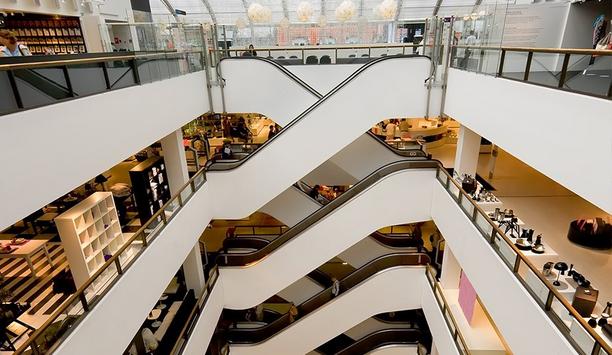
Delivering smart, secure and healthy retail environments with the cloud
Download
The healthy market for video surveillance at medical facilities
Download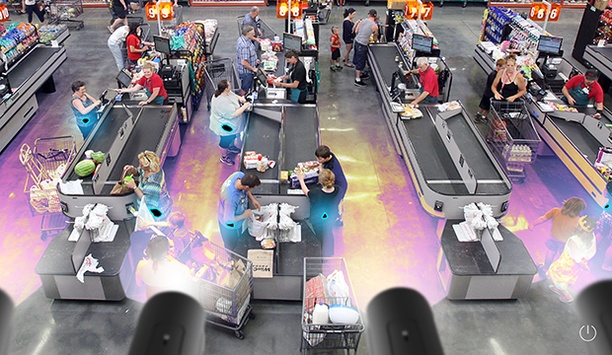
How to catch shoplifters with thermal imaging
Download
How video technology is transforming loss prevention, operations, and customer experience in the retail sector
Download
Delivering smart, secure and healthy retail environments with the cloud
Download
The healthy market for video surveillance at medical facilities
Download
How to catch shoplifters with thermal imaging
Download
How video technology is transforming loss prevention, operations, and customer experience in the retail sector
Download
Delivering smart, secure and healthy retail environments with the cloud
Download
The healthy market for video surveillance at medical facilities
Download

Videos
Shop security systems: Manufacturers & Suppliers

Using artificial intelligence (AI) to automate physical security systems
Download
A modern guide to data loss prevention
Download
7 proven solutions for law enforcement key control and asset management
Download
The truth behind 9 mobile access myths
Download
Access control system planning phase 2
Download

